I’ve finished my crossing of Scotland from the west coast to the east.
The last couple of days, as always, featured a lot of asphalt road. The landscape of the east coast lacks the wildness of the west, but is still beautiful.
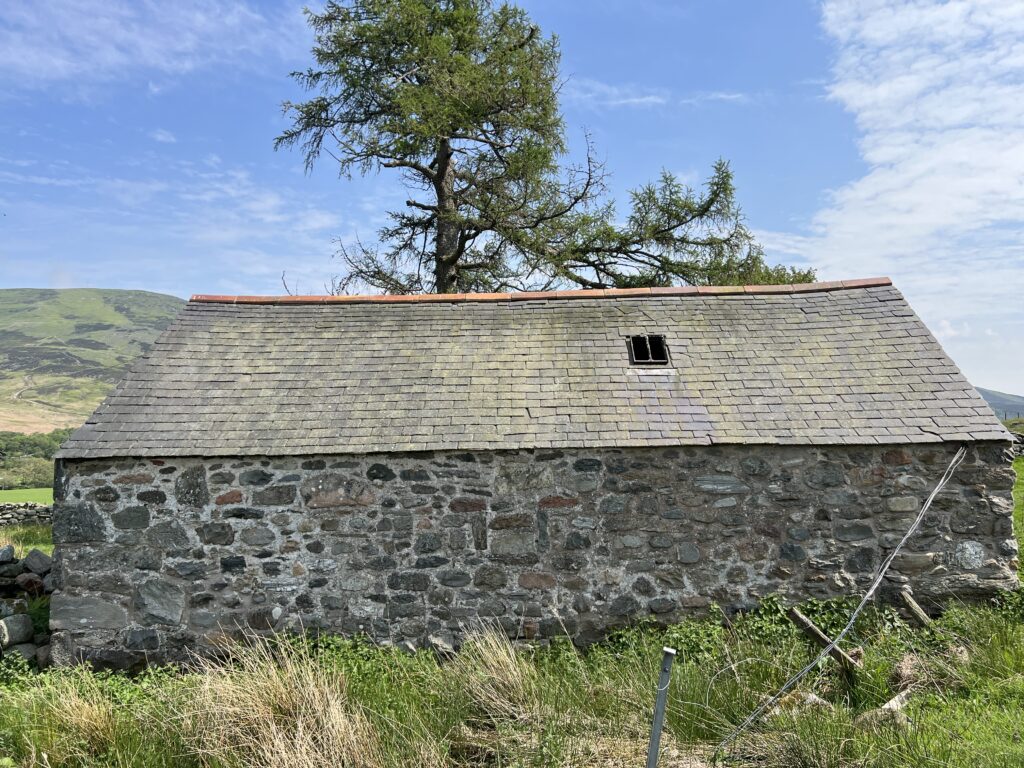
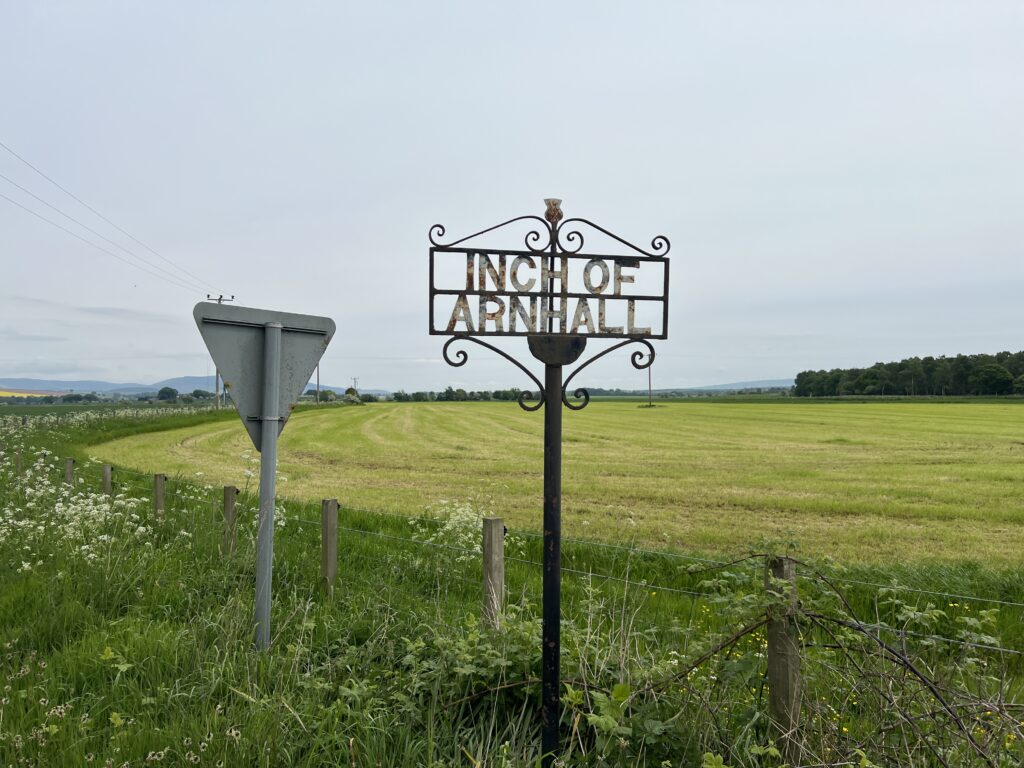
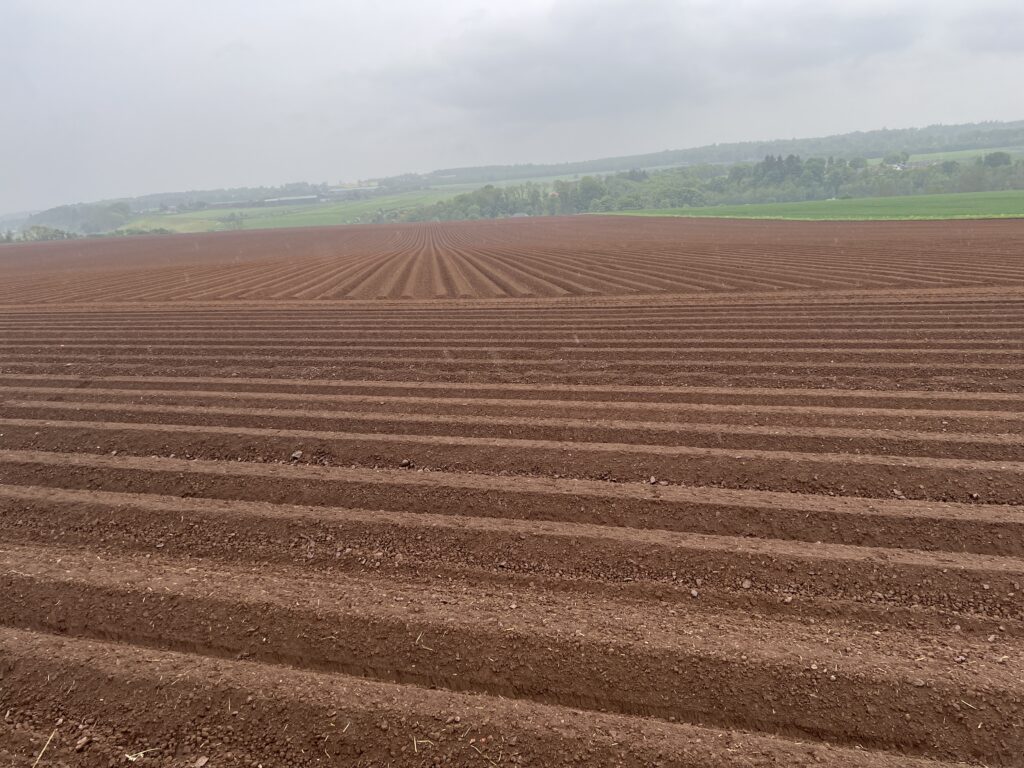
It rained the last day and there was a cold wind off the North Sea. But the weather had been great for most of the two-week walk, so no grounds for complaint.
I won’t make my usual joke about the Hill of Morphie, the last climb.

Then, finally, there was the North Sea in front of me, and the long bluff down to it, at St. Cyrus. I was tired and cold, so my smile is a bit forced.
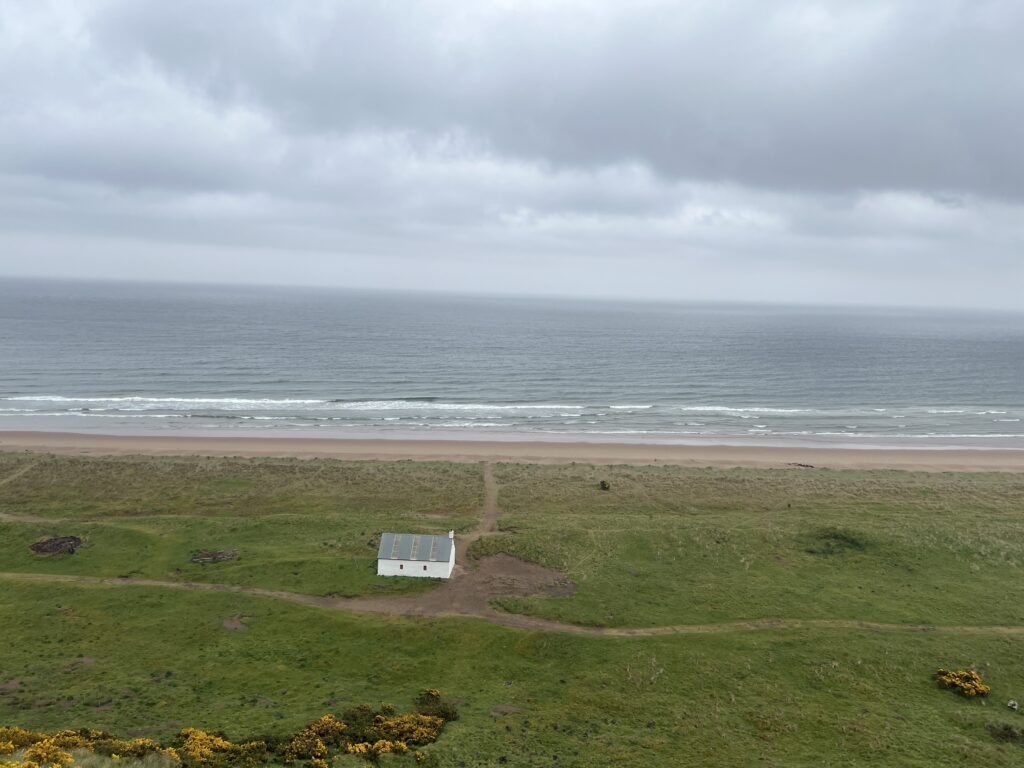
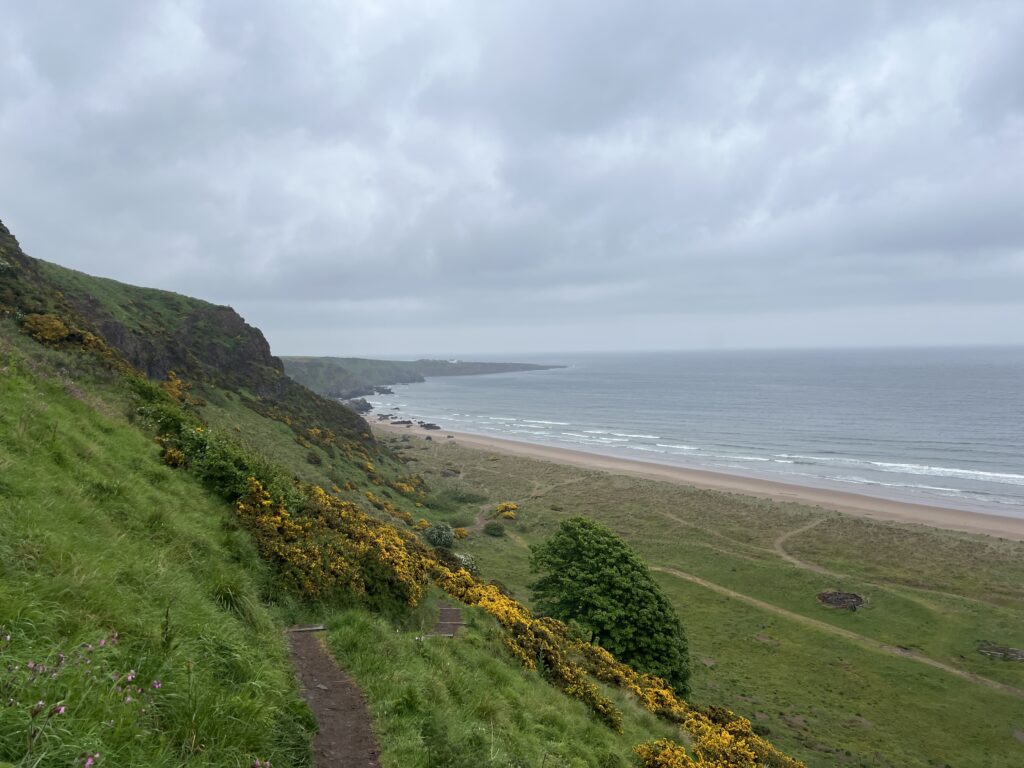
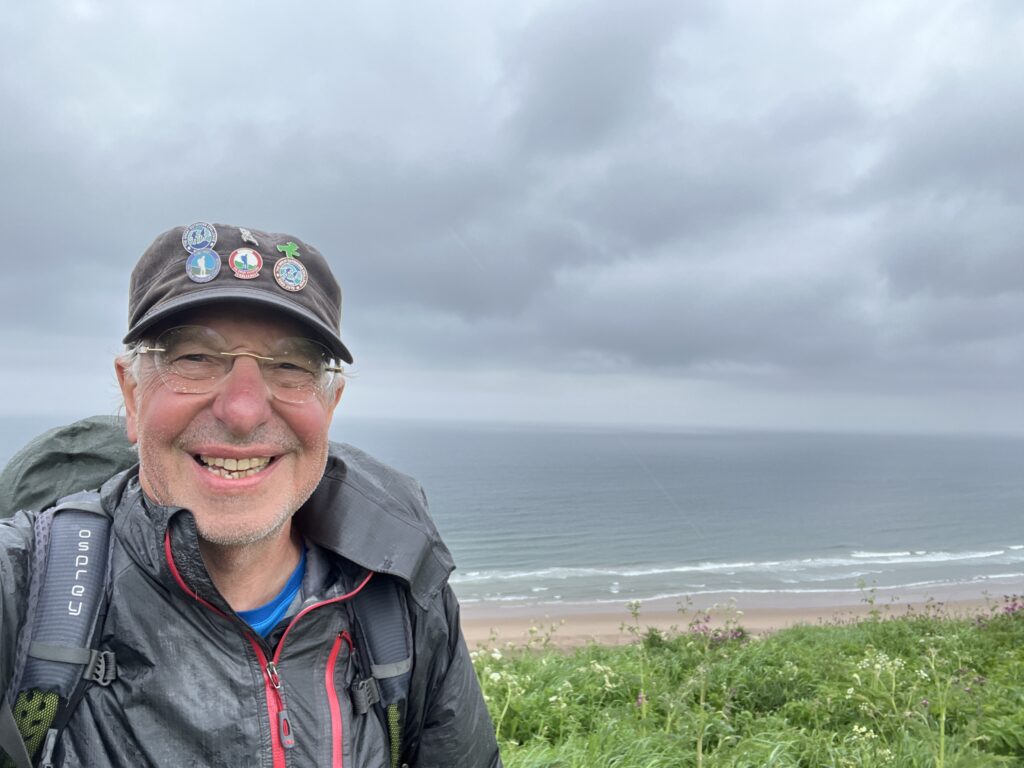
You’re supposed to go down to the beach, take off your boots and walk into the water. I got halfway down when I realized I would probably miss the bus to Montrose (the check-in and banquet site) and have to wait at least an hour for another one if I continued on. I was cold and wet, and decided I’d do the foot-dipping ritual someplace else the next day.
When I got back to the top, a woman in an SUV rolled down the window and asked if I was one of the cross-country walkers. I said yes. She offered me a lift to Montrose. She said she was waiting for a woman who was also on the Challenge who’d gone down to the beach for pedal ablution.
Soon that woman appeared—Jean Turner, the senior Challenger with whom I’d walked a couple of days earlier.
Jean is a stickler for protocol. “I won’t tell anybody,” she said, chiding me for my plan to do the foot ritual after the check-in that would officially seal my crossing as successful. By that time, Irene Robertson, the woman driving the car, was picking up on the spirit of the Challenge. Jean had met her by chance earlier in the day and Irene had volunteered to meet her at St. Cyrus.
“We can find a place close to the road in Montrose,” she said.
Irene drove to a public beach. I got out in the rain and walked down some metal steps that were being splashed by the high tide. I didn’t take off my boots, but I let the North Sea salt them. I was official, more or less.

At the banquet that night, it was great to see some of the people I’d met on this crossing, and a few I remembered from previous ones. And to see and thank the wonderful coordinators, Ali, Sue, and Mick. This is Mick talking at the banquet that night (the first of three, on sequential days, as Challengers came in on different schedules).
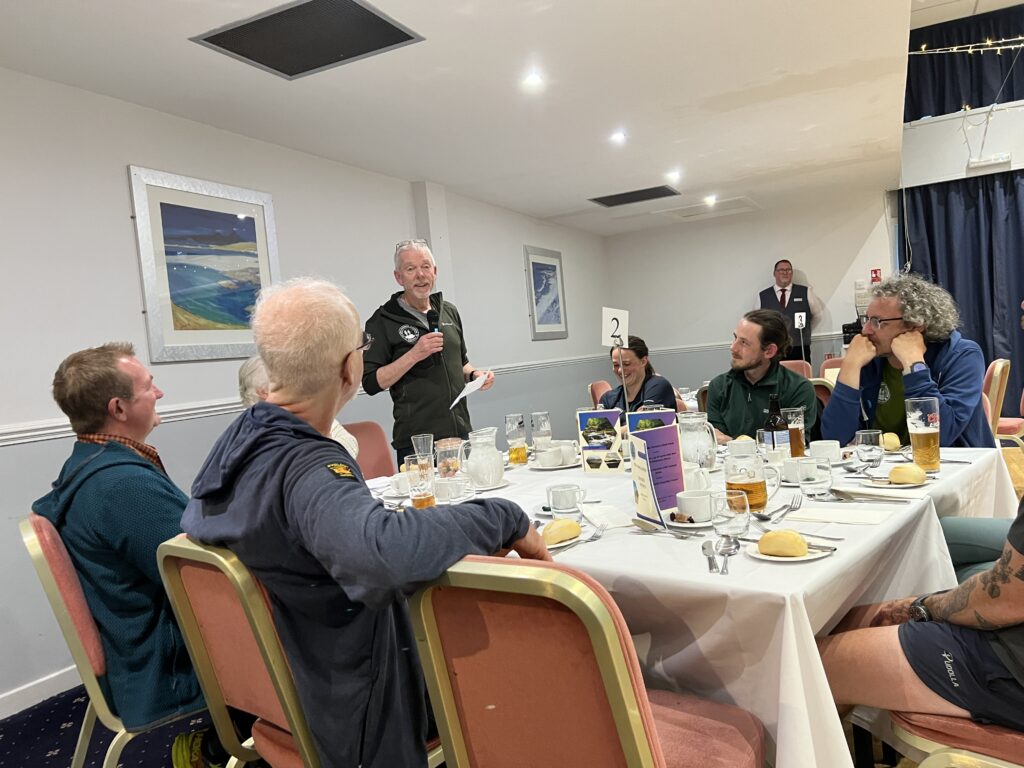
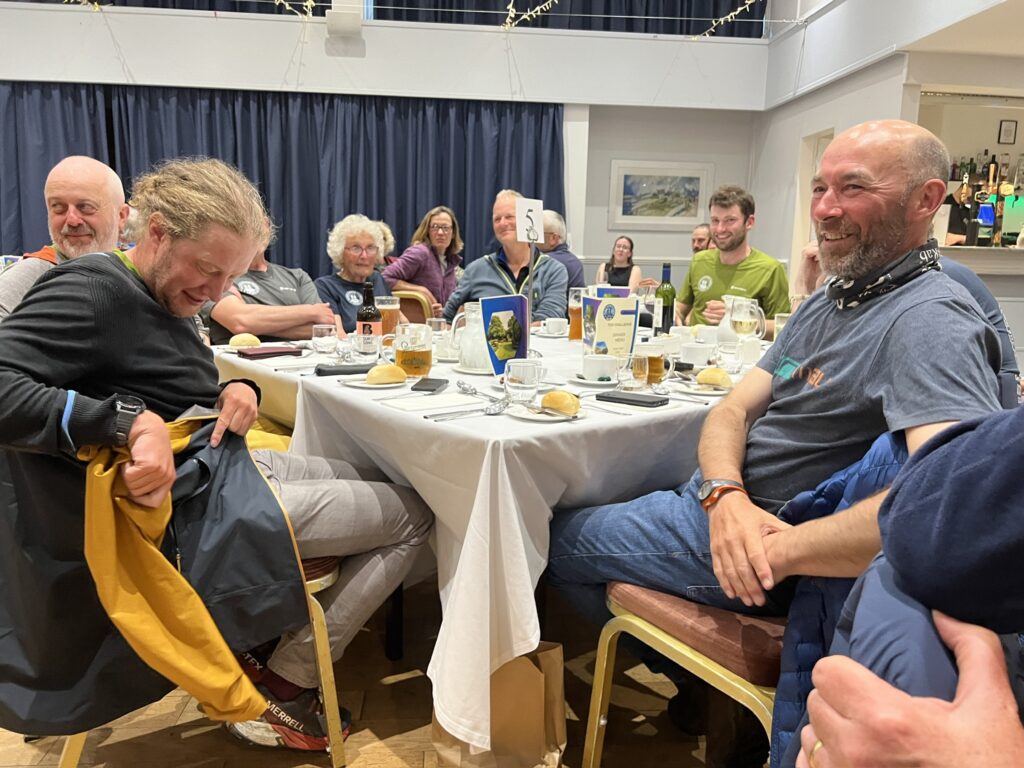
I spent the next day in Montrose writing a blog post, and in the afternoon took a bus to Donnattar Castle near Stonehaven. It goes back to the 1200s. William Wallace (“Braveheart”) visited once. It’s the where the Scottish Crown Jewels were hidden from Oliver Cromwell’s army. Franco Zeffirelli filmed a version of “Hamlet” there.
It’s the castleiest ruined castle you could imagine, especially on a cold and misty day.


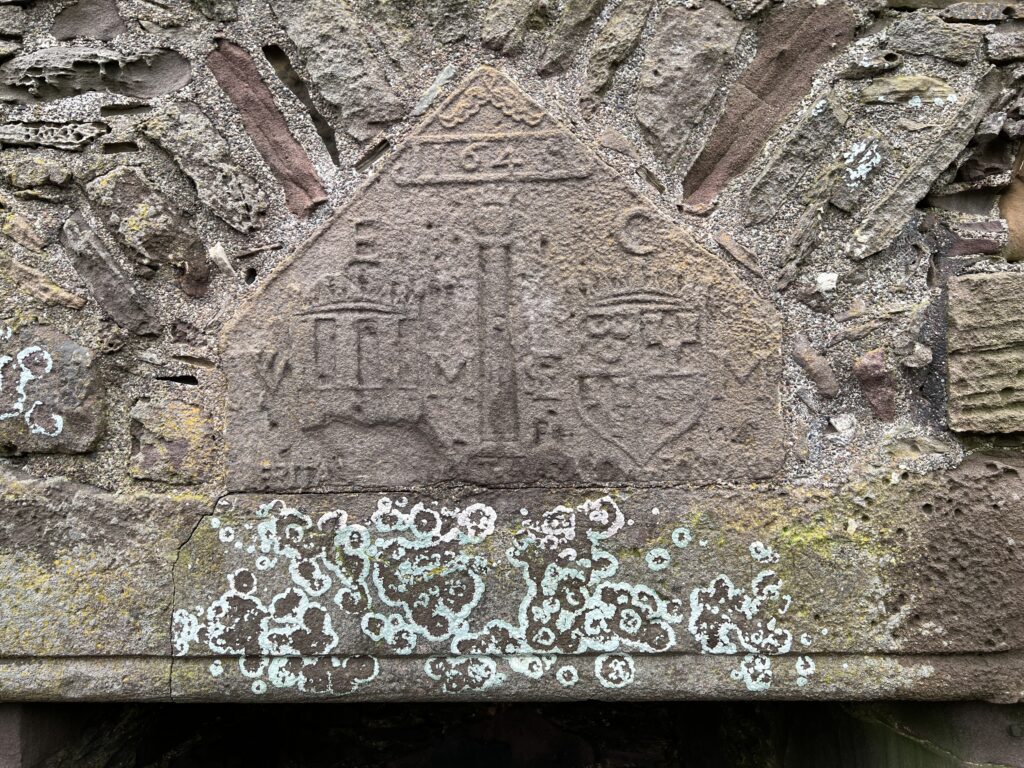
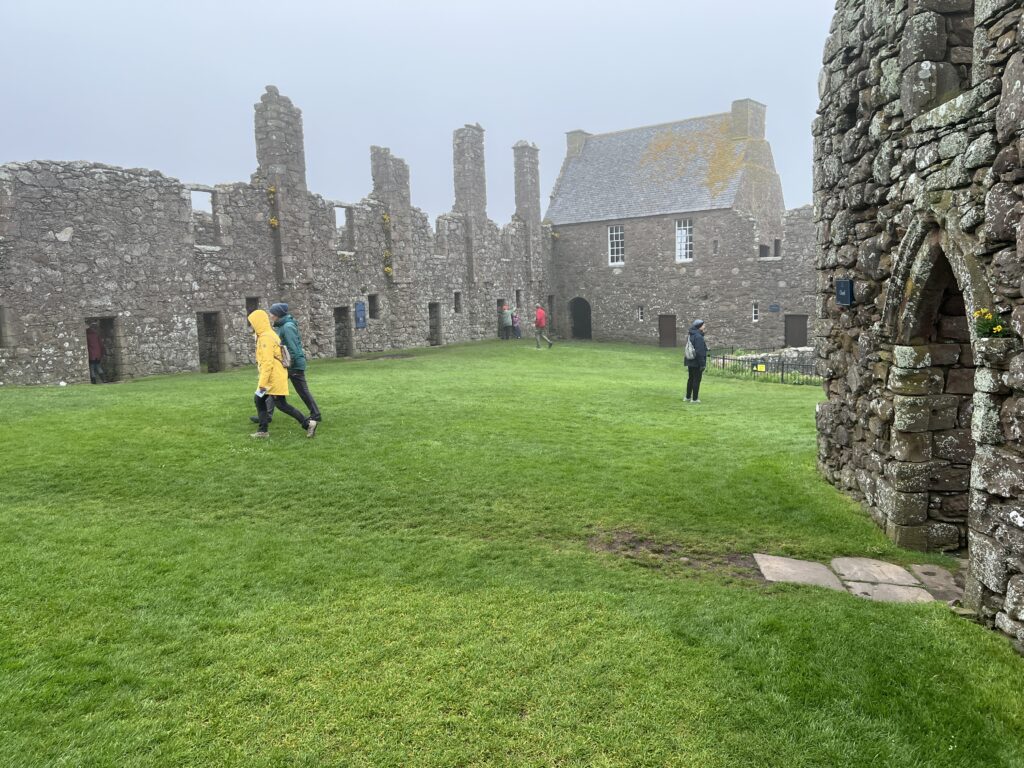

So what is the after-action report?
The weather was exceptionally good. People were talking about this as you met them along the way—the locals, that is. It had been rainy and cold almost right up to when the event started. In fact, there were two days when it was about 80, and many Challengers found that challenging.
316 people started the walk–106 were first-timers–and 55 “retired” before the end—a slightly higher percentage than usual. Of the 49 Challengers in their 70s (my age group), one-third retired. In the biggest age group (the 60s), one-fifth of the 104 starters dropped out. Overall, foot problems were the most common reason; no one needed to be rescued.
The 20 vetters reviewed 268 different routes. (That’s fewer than the number of starters because some people went in groups.) Each route required an average of three reviews—edits and re-edits—which is a tremendous amount of work. There were walkers from Mexico and Malawi; 22 percent were from outside the United Kingdom. The youngest Challenger was 18, the oldest 85.
The seventh person who finished this year marked the 10,000th completed walk since the event began in 1980.
I was pleased with my route. I thought it was going to be too tame and repetitious of previous walks, but it was neither. While I didn’t summit mountains, I did a lot of climbing and had lots of long days. These are the distances for the first 12 days. The final two days were 14.4 miles and 16.6 miles.
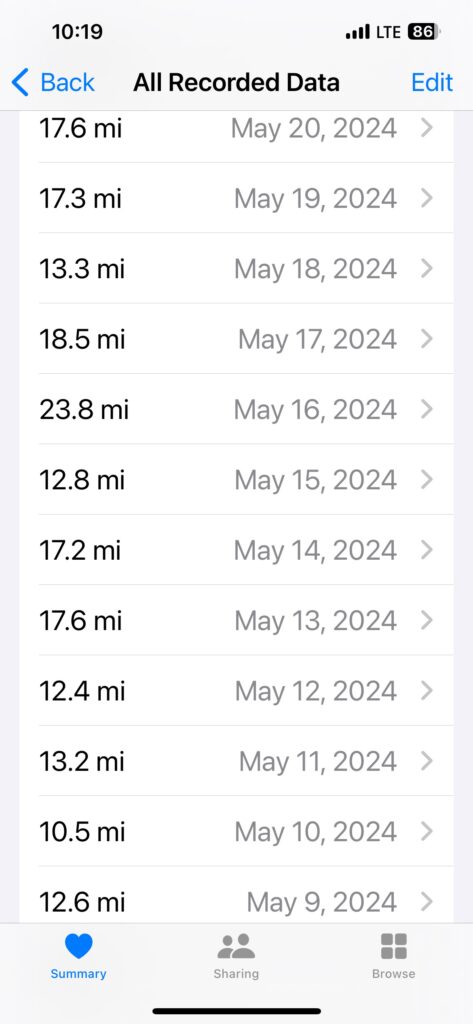
I got to plenty of isolated places. Not the most isolated on offer, mind you, but nevertheless places where you could look forward, back, and to the the side and see no person, structure, or vehicle.
As on all outdoor expeditions, I regret that I don’t know any geology. There’s a lot of it out there.

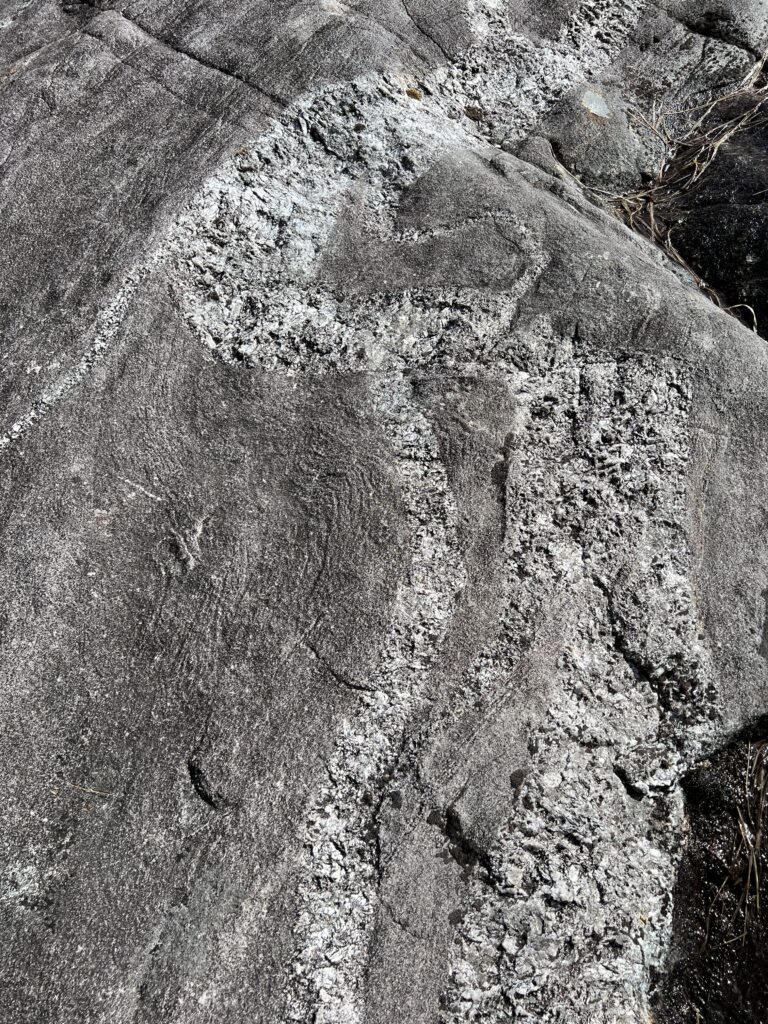
I met interesting people, both Challengers and passersby. I was especially happy to spend time with Jean Turner, who at 84 was the senior woman walker, completing her 18th Challenge this year.
Jean’s a retired general surgeon and mother of six who spent much of her career filling in for surgeons in the Hebridean and Shetland islands, where there was rarely more than two (and usually only one) surgeon. Her instinctive care for the welfare of others has continued long after she stopped practicing at age 65. She’s one the most admirable and remarkable people I’ve ever met.
I met her on my first crossing 10 years ago, and ran into her by chance at Mar Lodge, a tea-cookies-parcel-pickup stop on a large estate about halfway through the crossing. We walked together one afternoon and she kindly answered lots of questions about her life.

Among the other people I met were Brian and Jackie, from Richmond, Va. Brian represents Hoka running shoes, and Jackie is a registered nurse. We had lunch at the Shielin of Mark before heading pathless up to Muckle Cairn to pick up a trail.
Brian and Jackie got engaged on the Challenge, in Glen Feshie, where Brian had been before. (“I knew I wanted to pop the question there. It’s so beautiful.”)
It was a surprise. Everyone applauded them at the first-night banquet in Montrose when their engagement was announced. I ran into them in the Glasgow airport as we were all heading home.
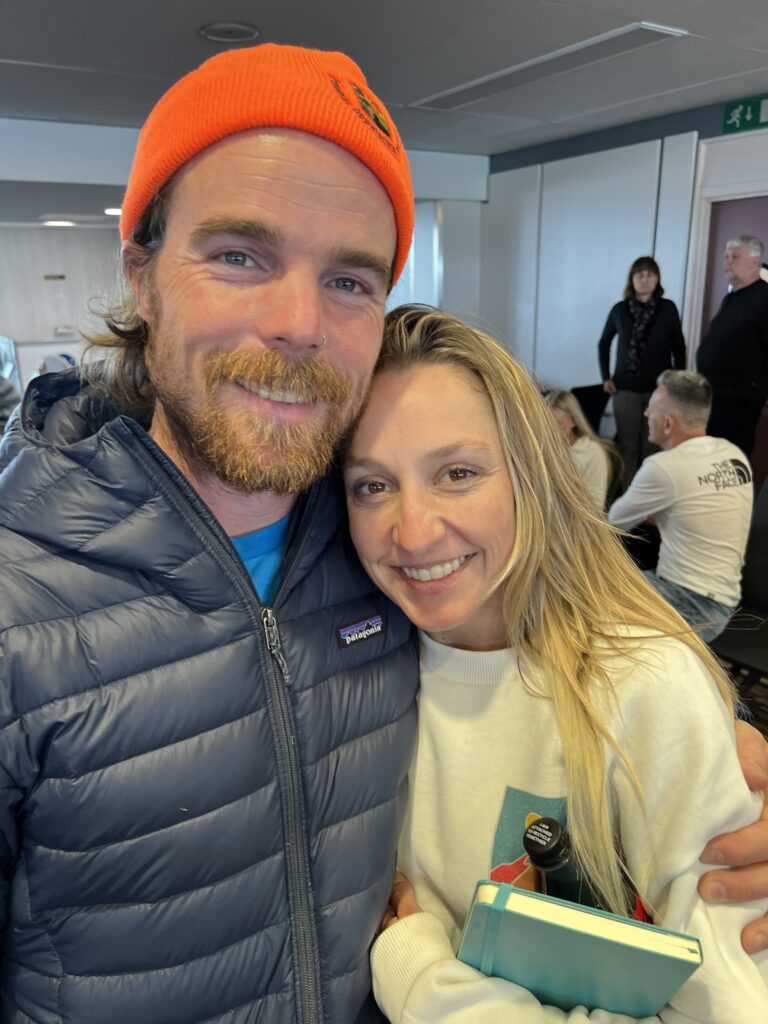
In my stopover in Glasgow after the walk I went to the Apple store and explained the problem with the keyboard I’d made such an effort to get mid-Challenge, but couldn’t get to work.
The guy there got it to work in about three minutes—no surprise.
The problem was that when I turned on the Bluetooth function on my iPad mini, a keyboard came up—but it was the old keyboard, which I’d thrown away in Spean Bridge. The new keyboard couldn’t override it, and wouldn’t even announce itself until one clicked on “info” on the keyboard listed and told the iPad to “Forget this device.” Of course, the manual (in seven languages) that came with my “magic keyboard” didn’t mention that.
This walk was harder than I expected, even after trying (pretty unsuccessfully) to make it easier than previous ones. My feet hurt (they always do), and so did my shoulders. More willpower was required than I expected.
Will I do it again? Probably not.
As wonderful as the event is, it requires months of planning and consumes nearly all of May, when lots of other things are going on. (I missed my 55th high school reunion this time.) Plus, there are other places to see before my taste for travel dwindles away entirely.
Nevertheless, it’s not an exaggeration to say that The Great Outdoors Challenge changed my life, although exactly how is hard to explain. I’m deeply grateful to have encountered it.
For a modest fee, you can get a pin—“badge” is what they call it in Scotland—noting the year of your crossing. I lost the one for 2015, my second crossing, a few years ago when I was crashing through brush on an island on the Eastern Shore of Virginia.
This is the hat I crossed with. The chair is one designed by Charles Rennie Mackintosh, an architect, designer, and artist–the Leonardo of the Glasgow School of Art and the “Glasgow Style” of Art Nouveau. The green Walking Man is from Germany, a gift of a friend.

I asked the coordinators if they happened to have a badge from 2015. They did, and kindly brought it to Montrose. It was in the bag with my other post-Challenge swag (tee shirt, hiking socks, post card).
In the airport waiting to go home, I rearranged the badges and pins. Now the Walking Man is heading across six years of The Great Outdoors Challenge to rest in a Scottish chair.
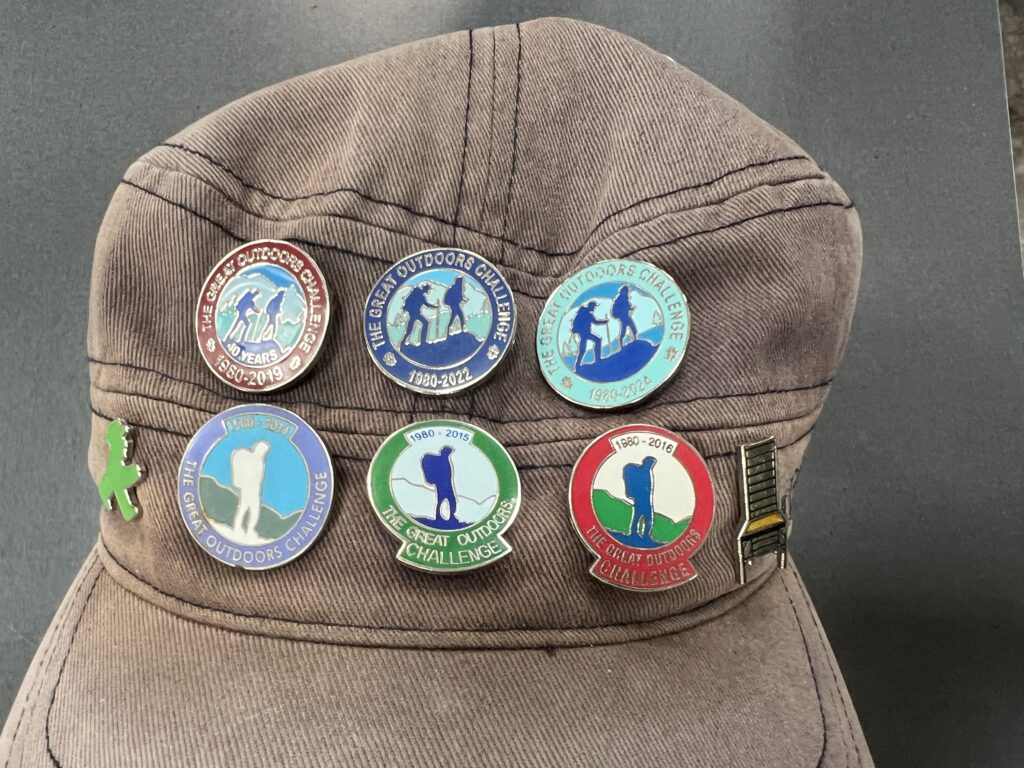
That sounds about right.


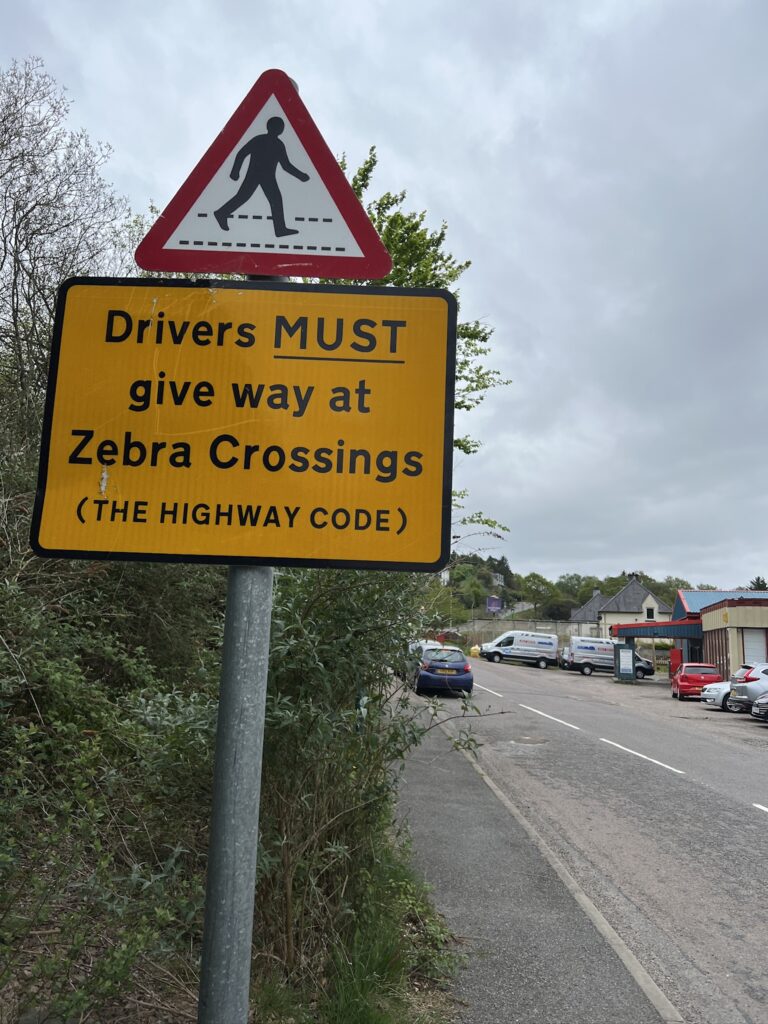
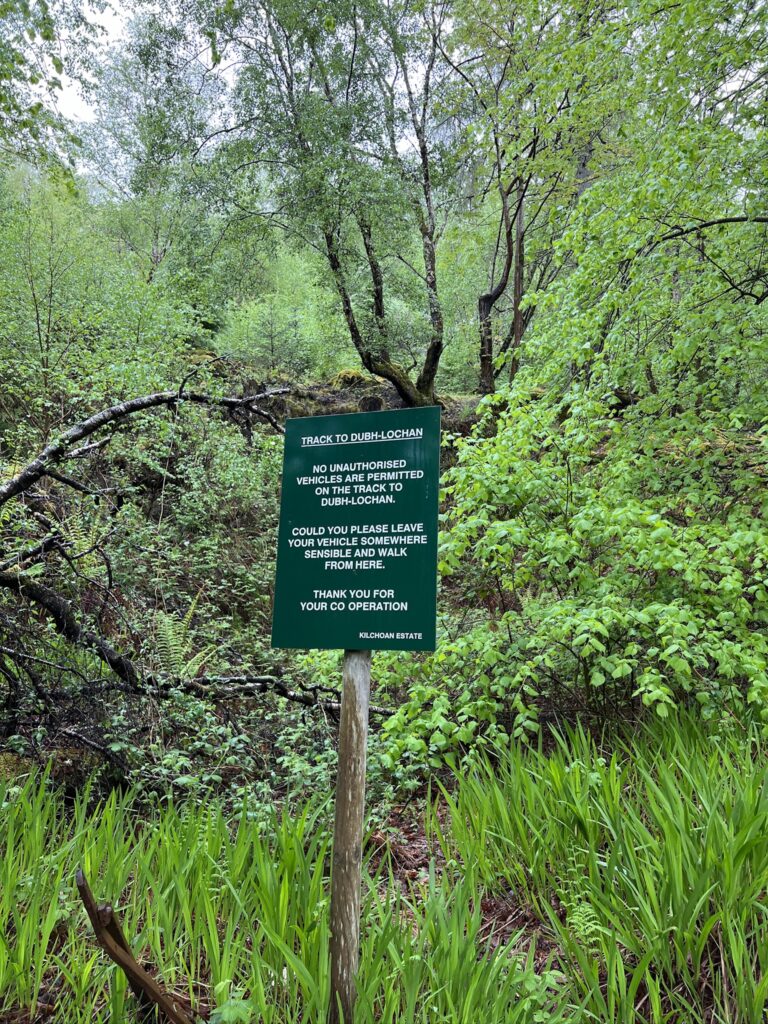

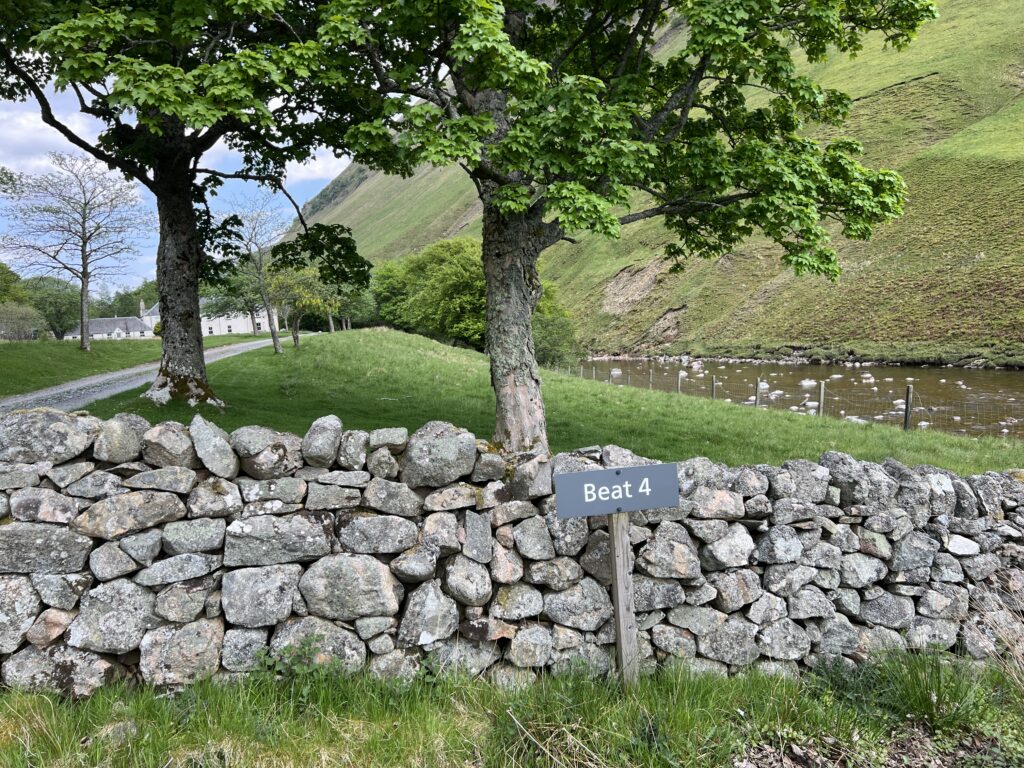

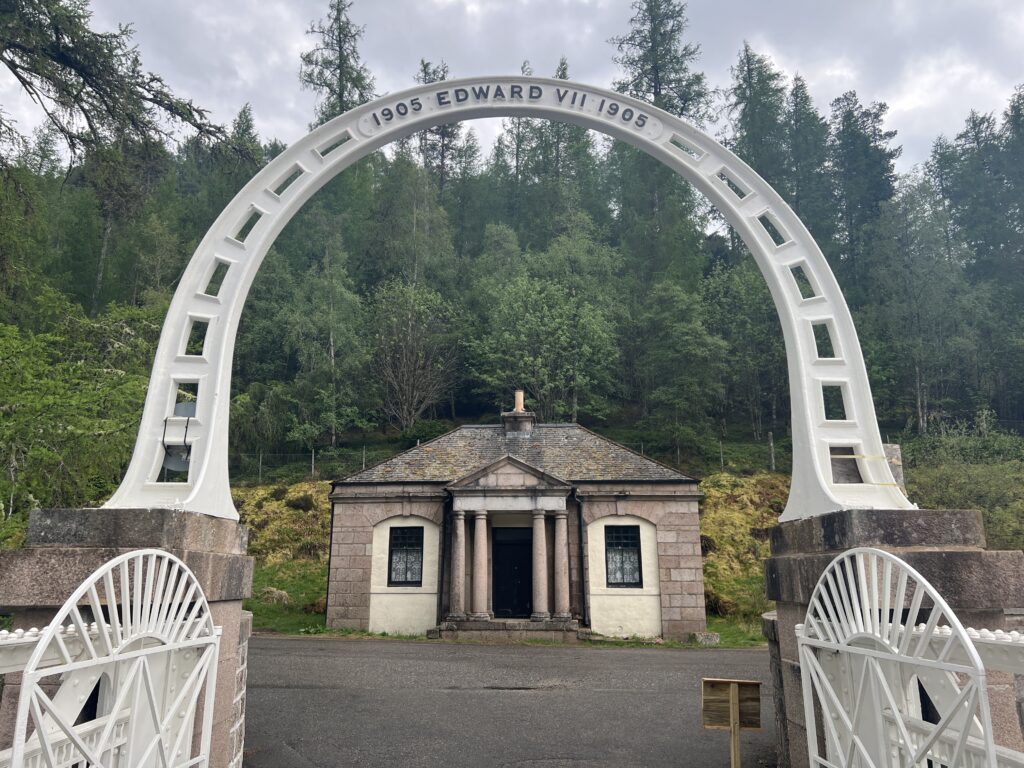
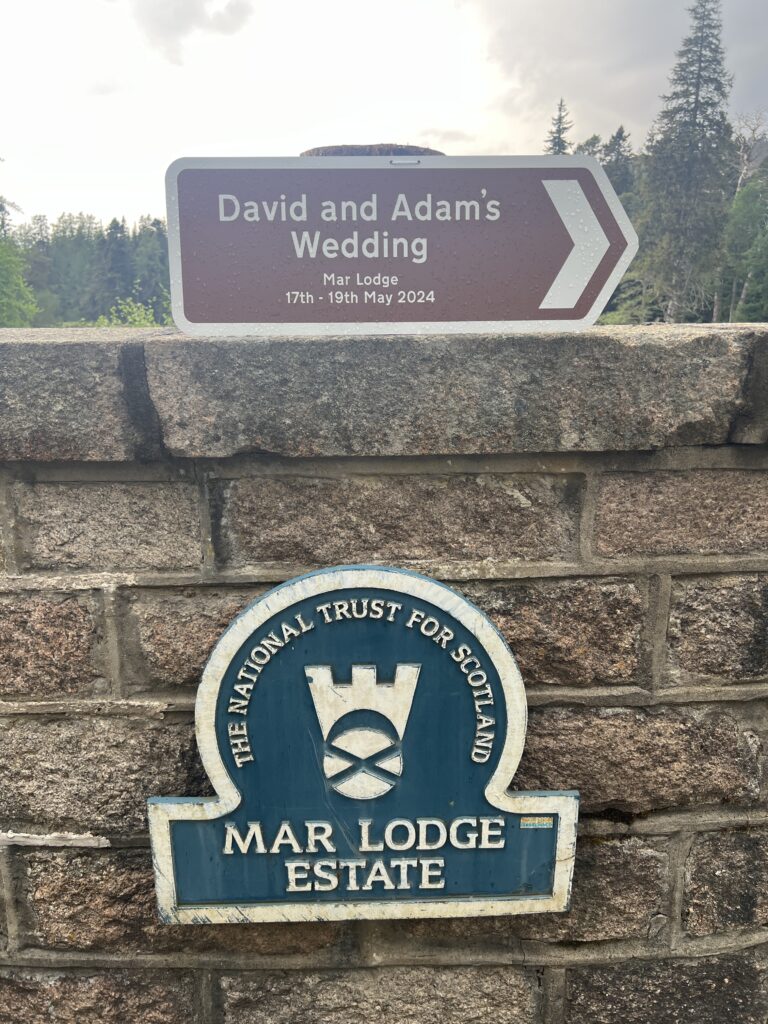
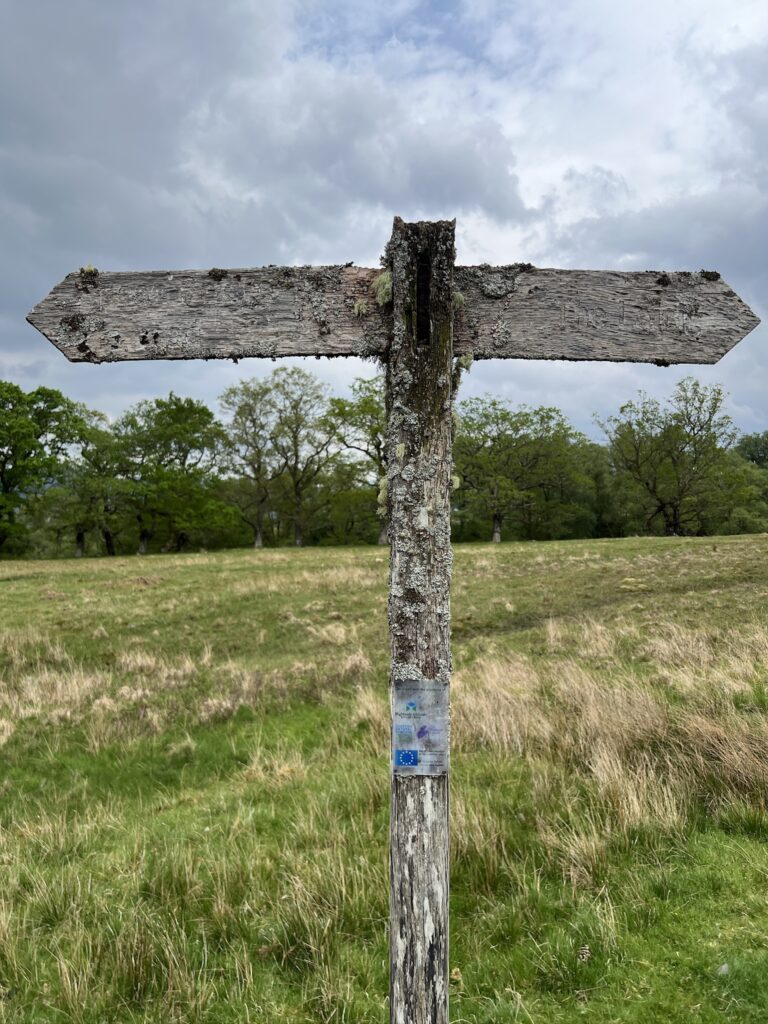
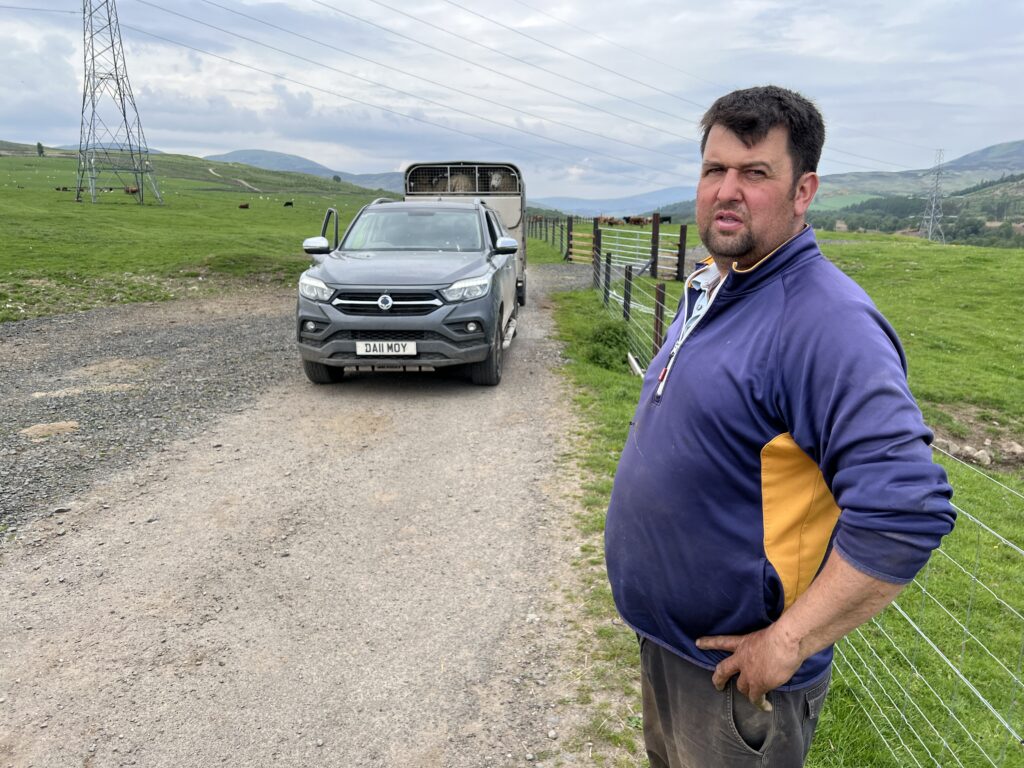


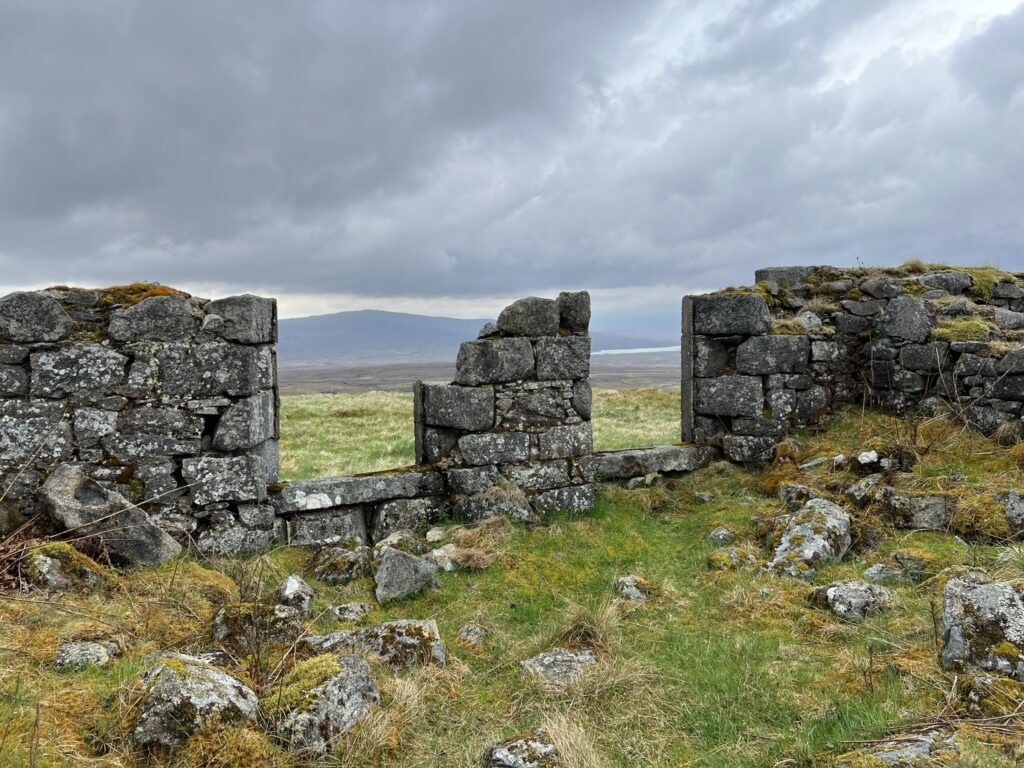

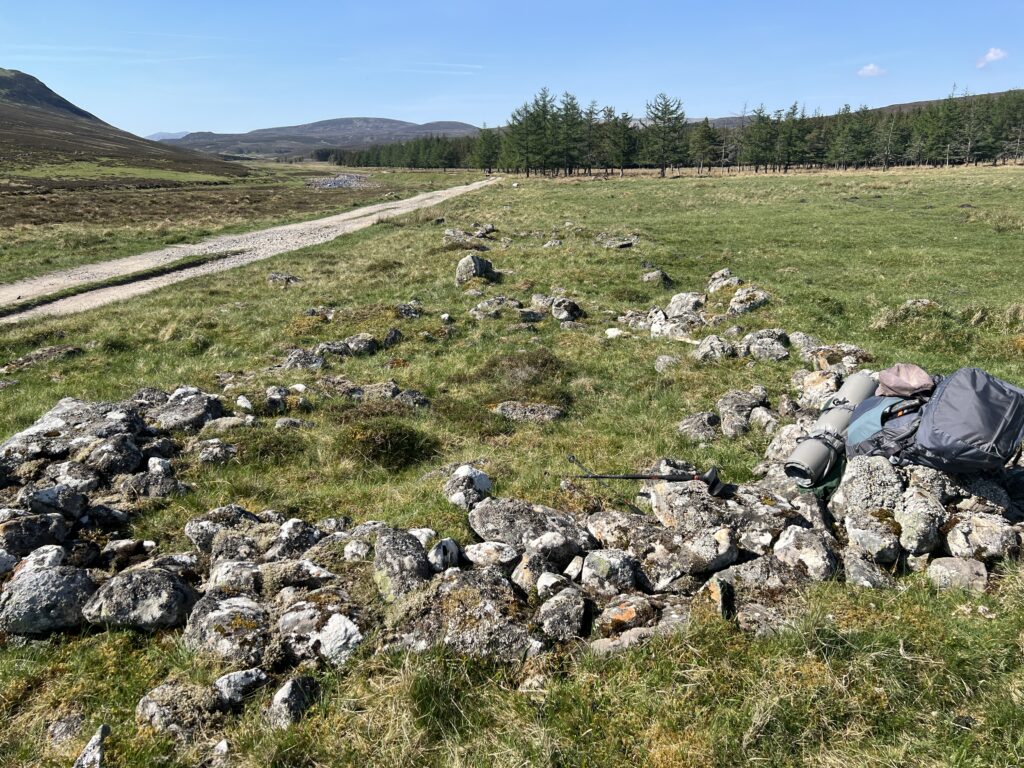
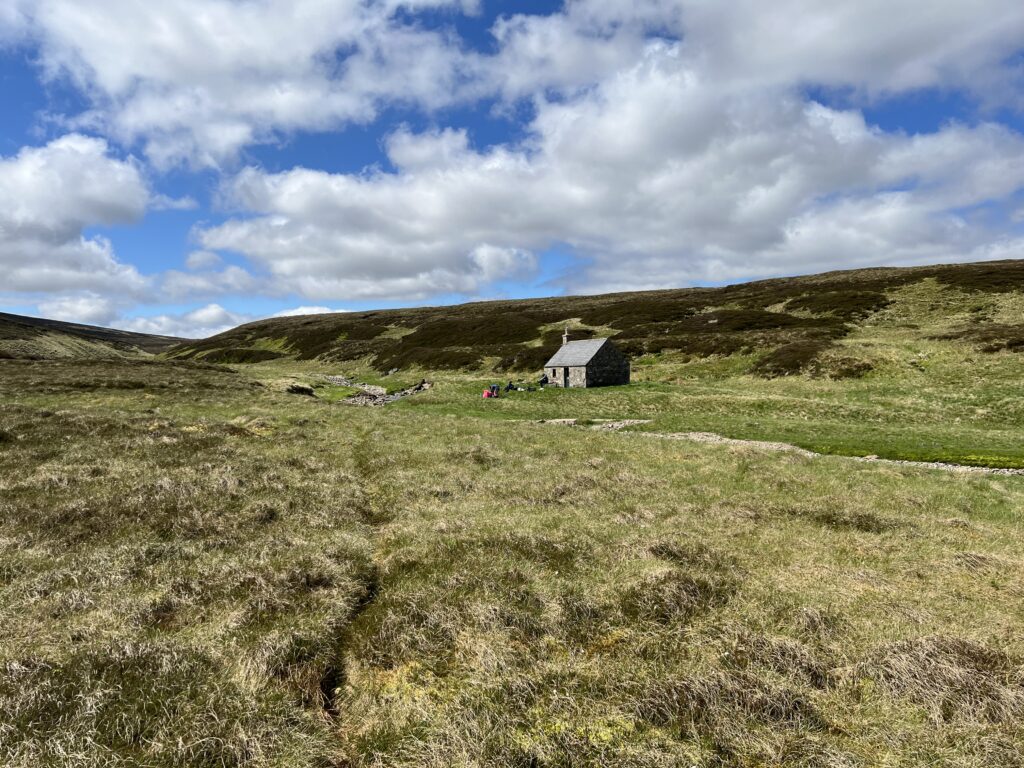
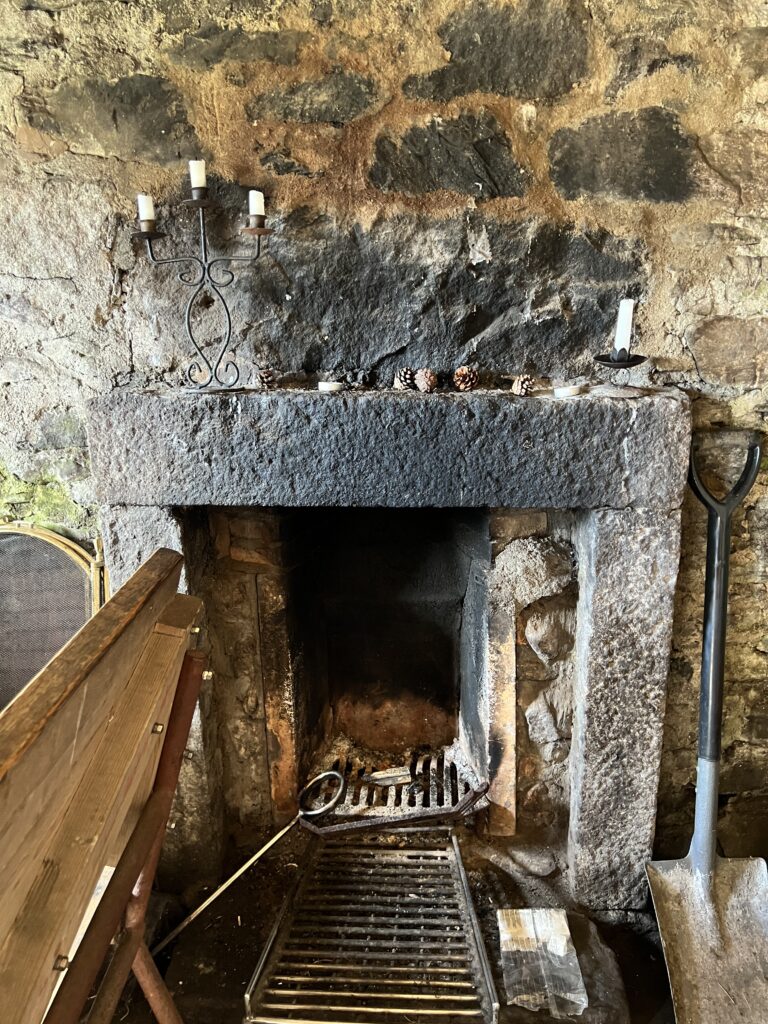


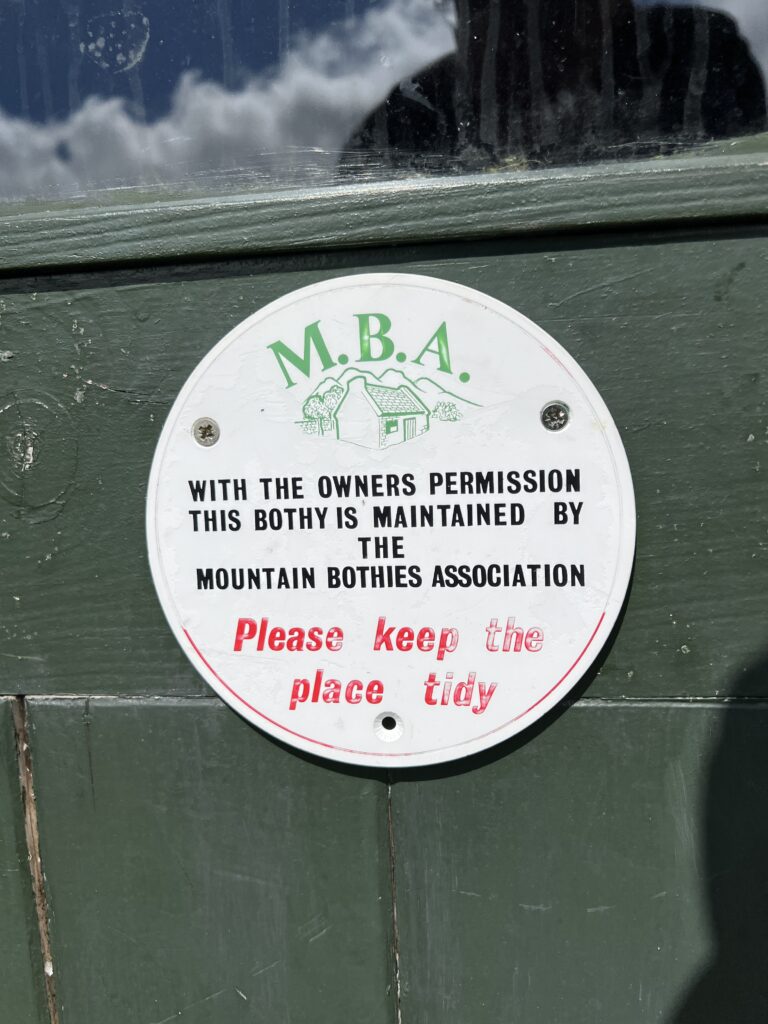
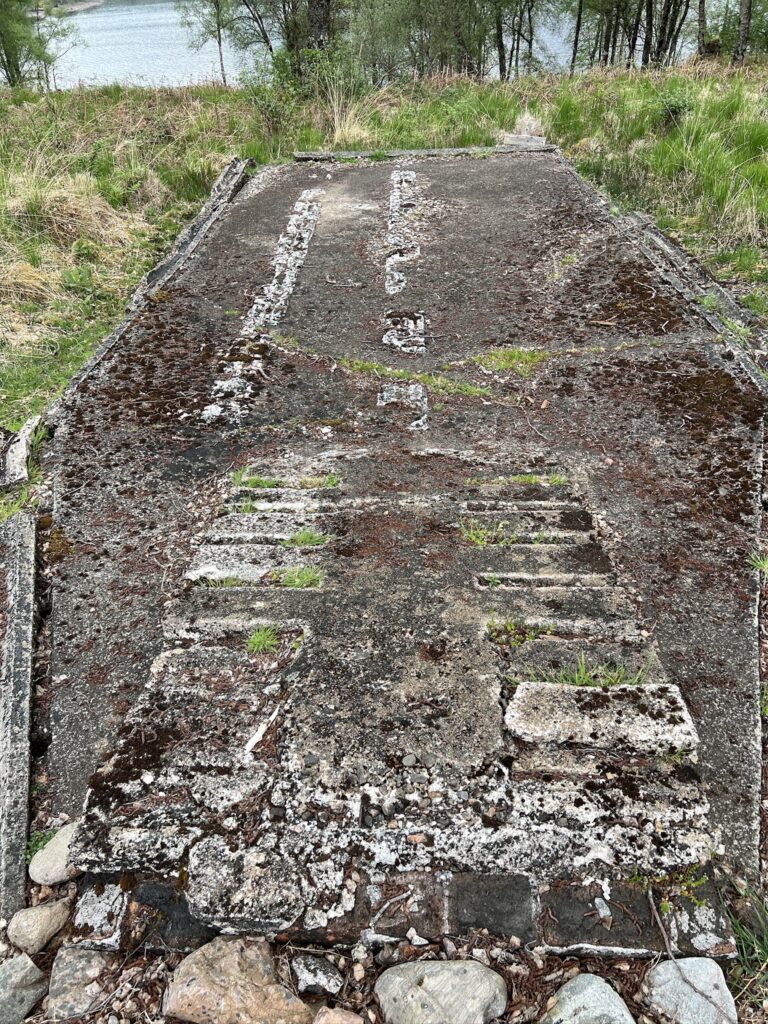





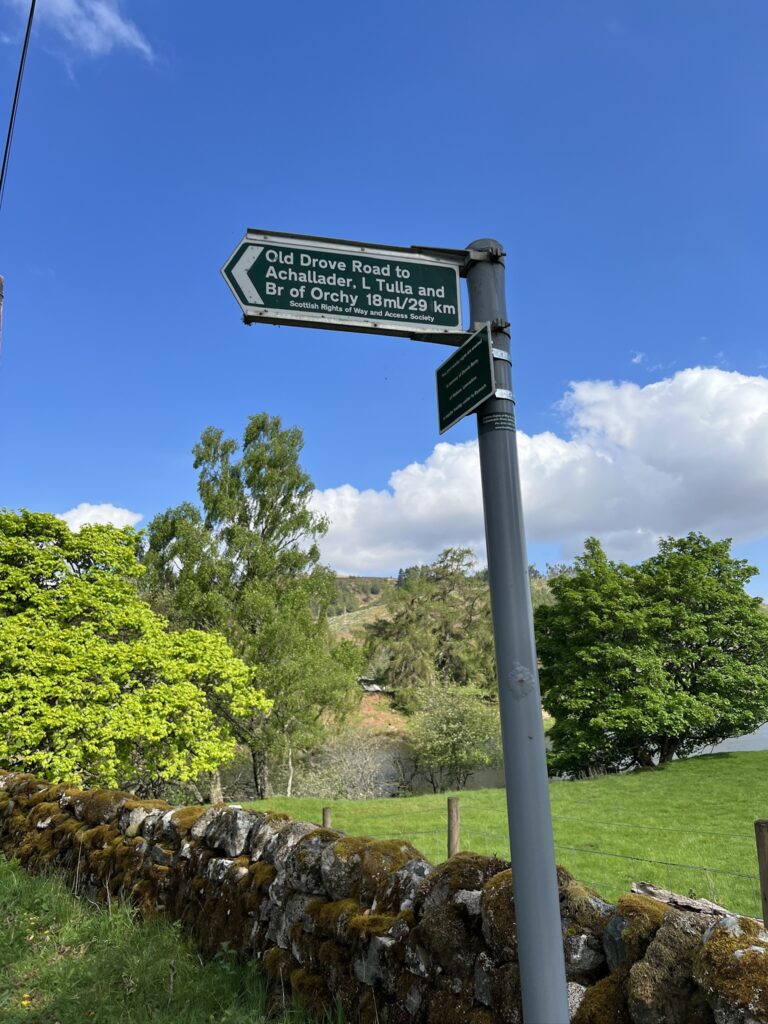
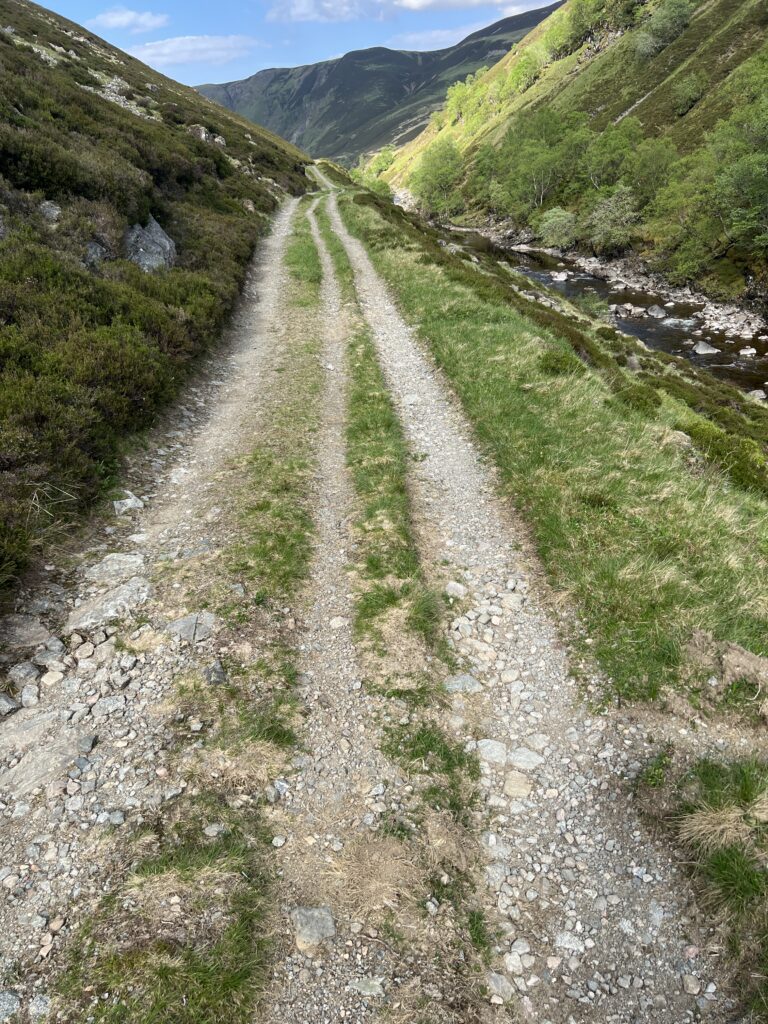
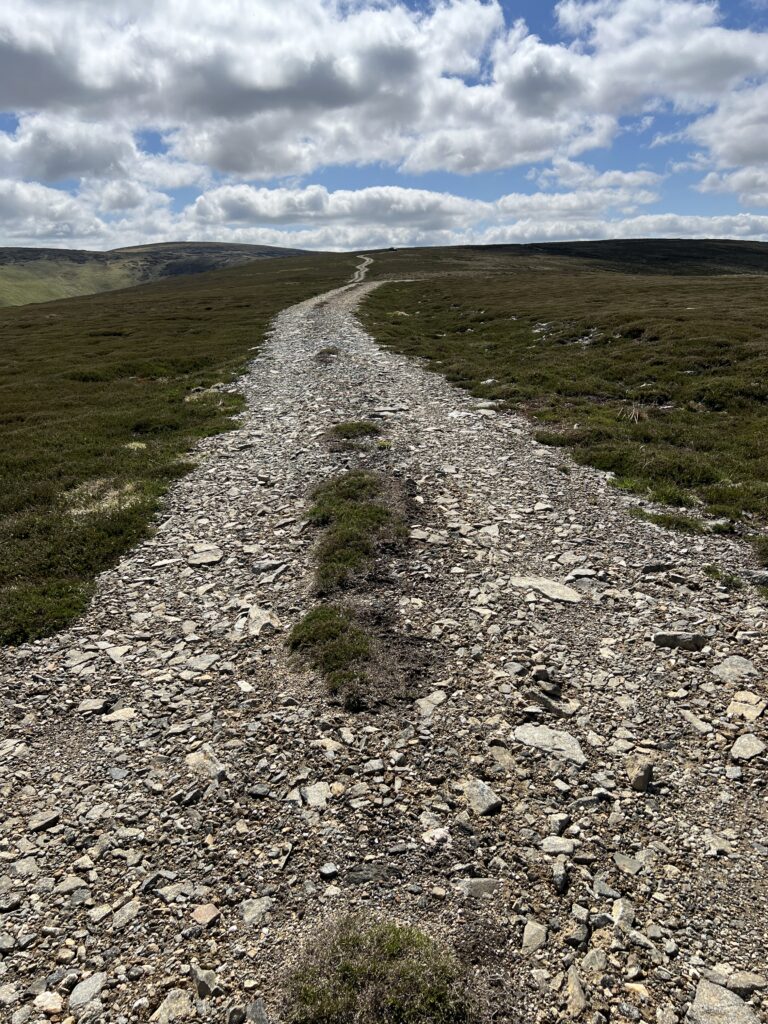



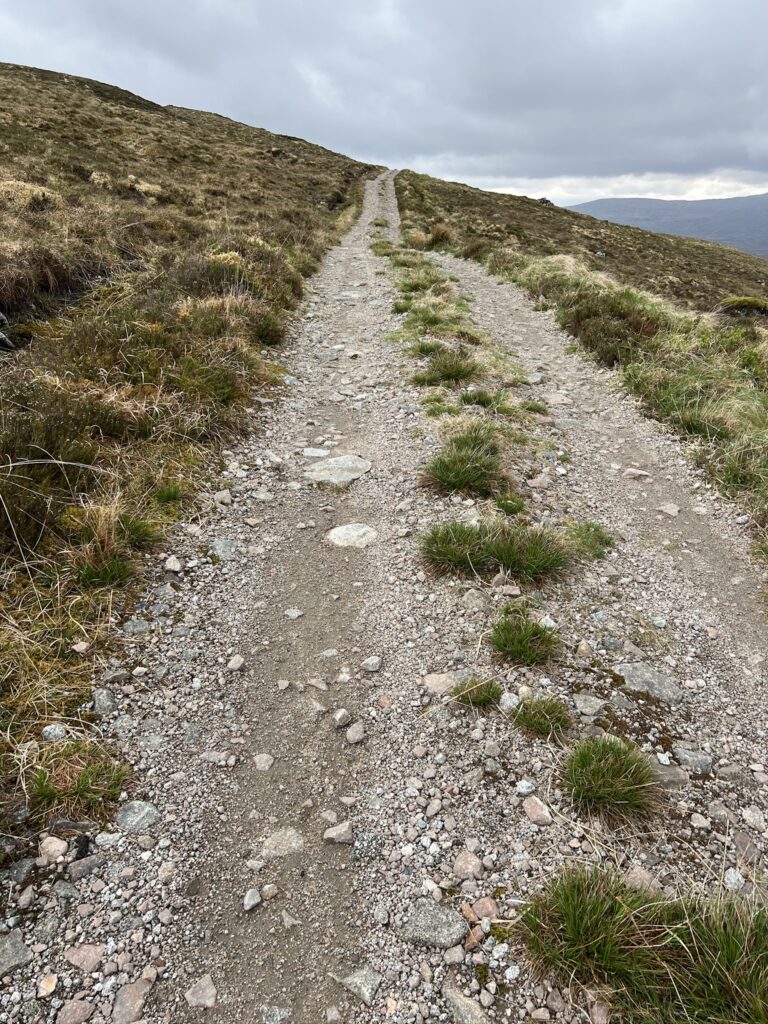




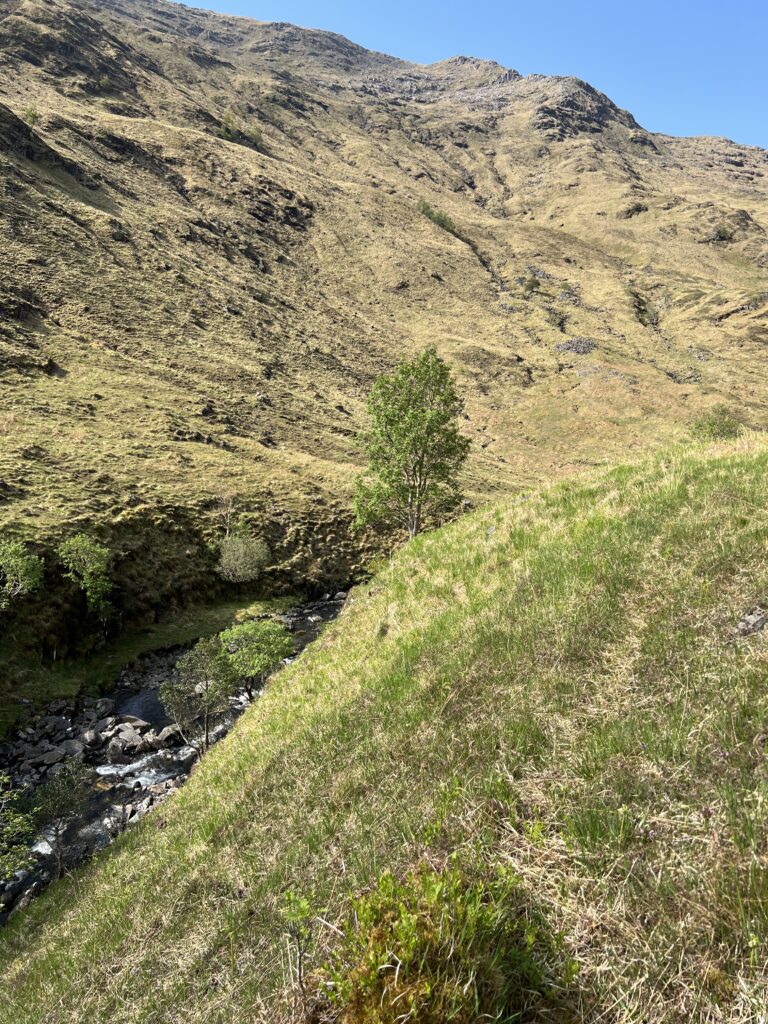
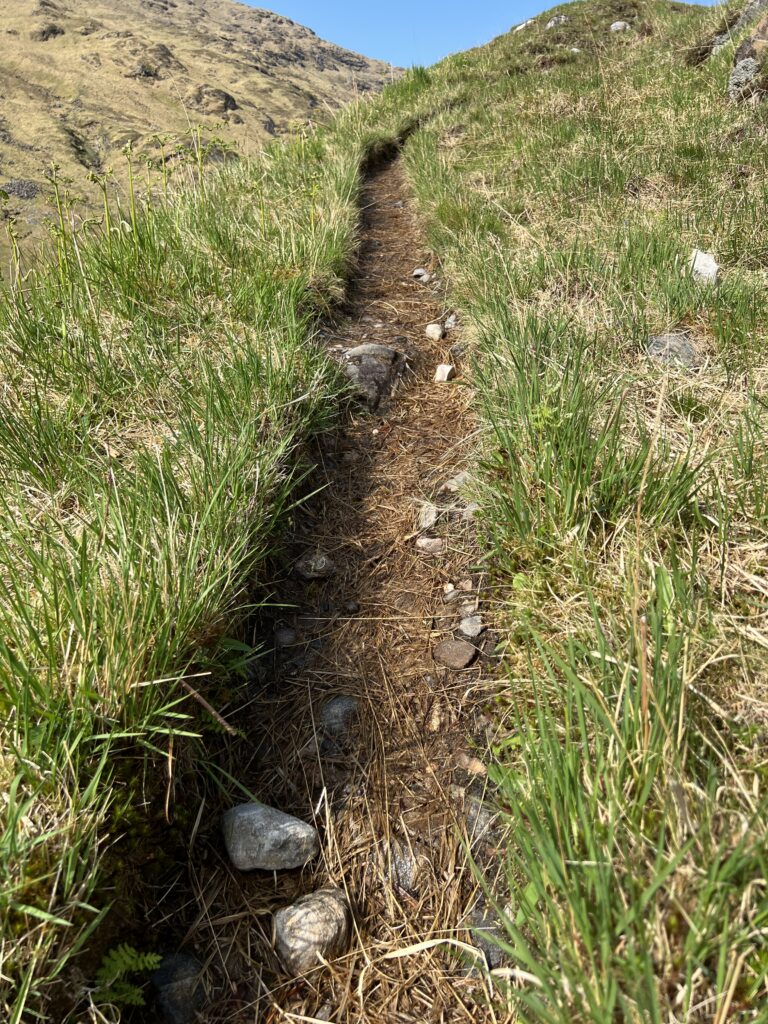



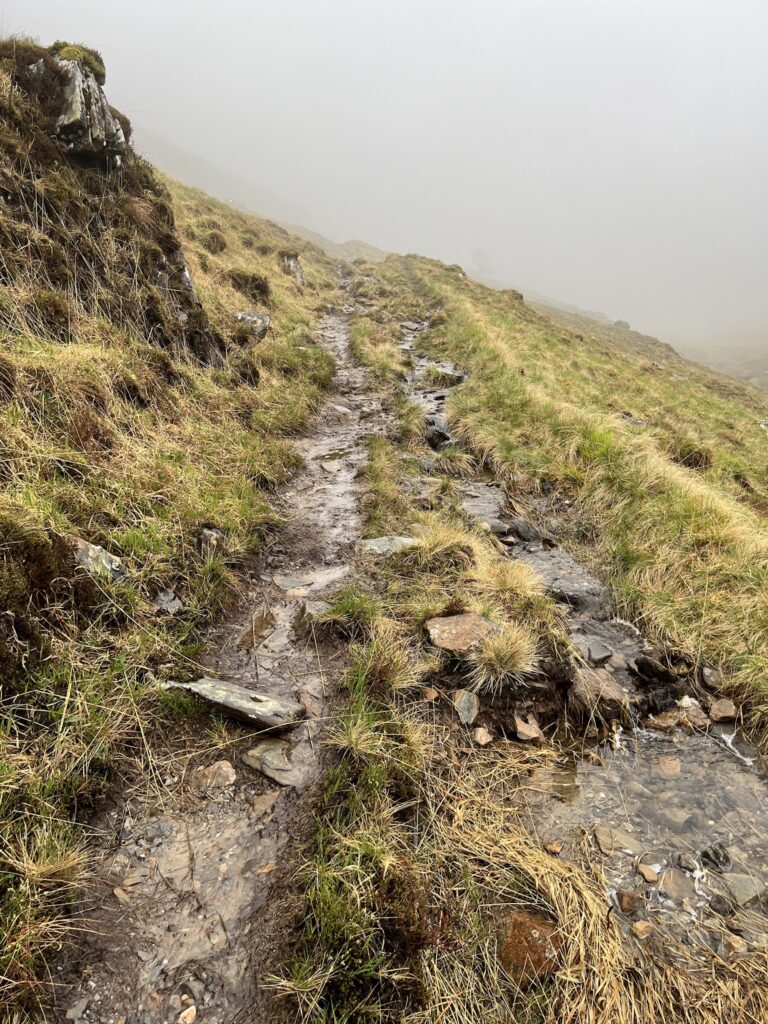
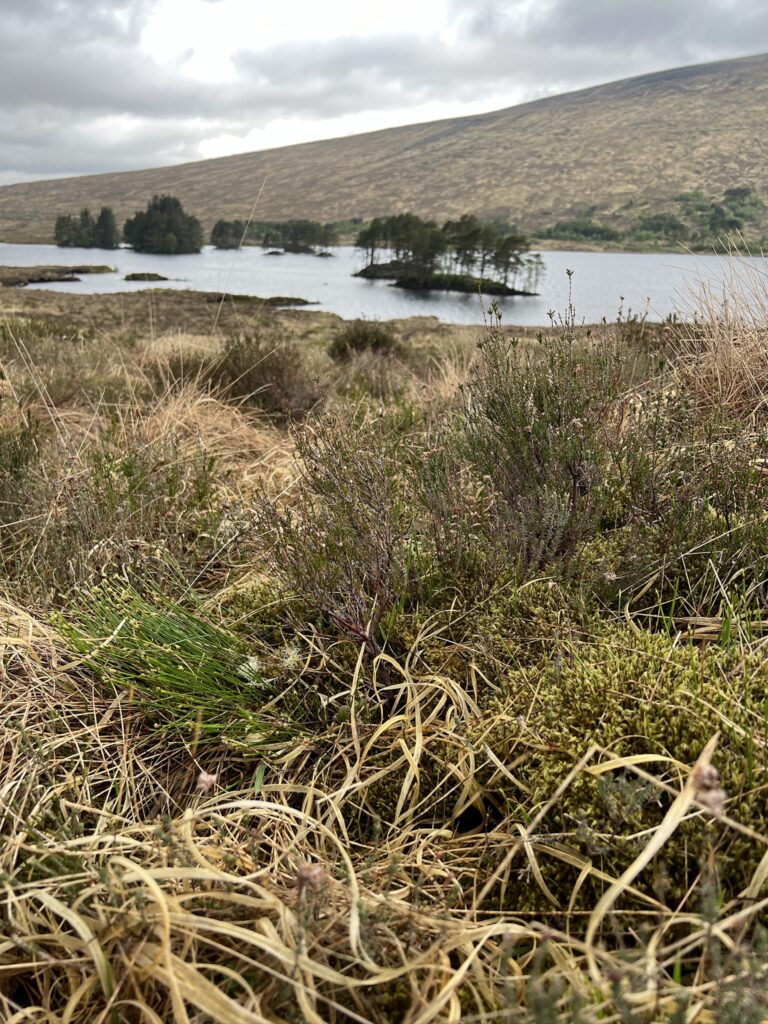

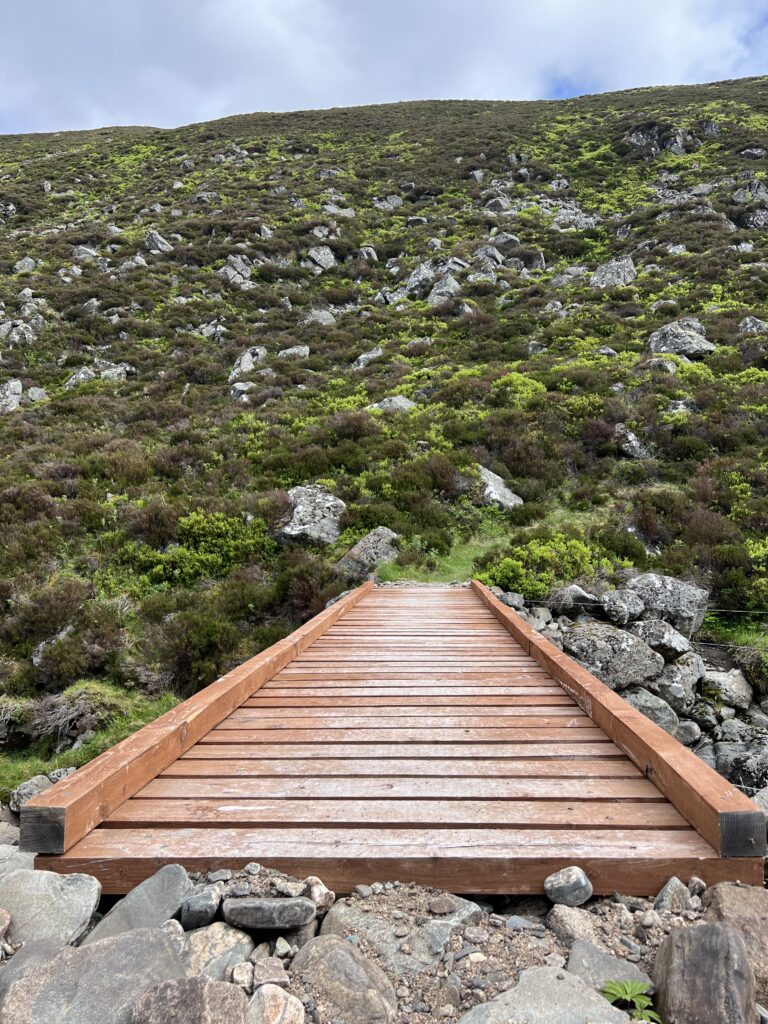



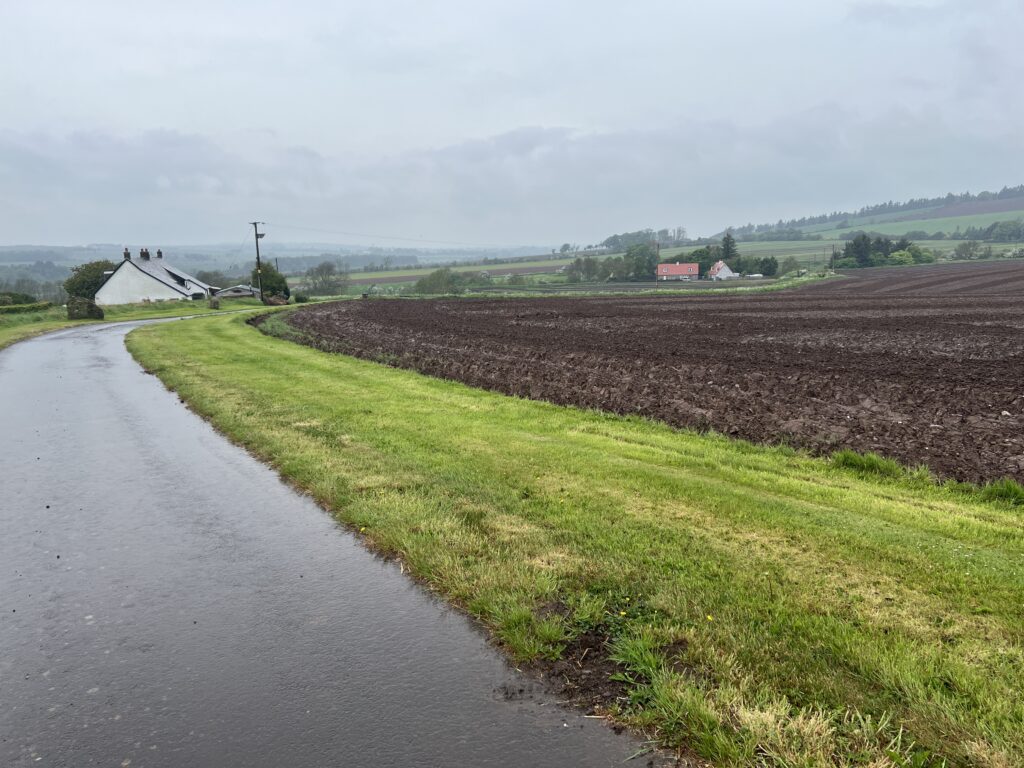


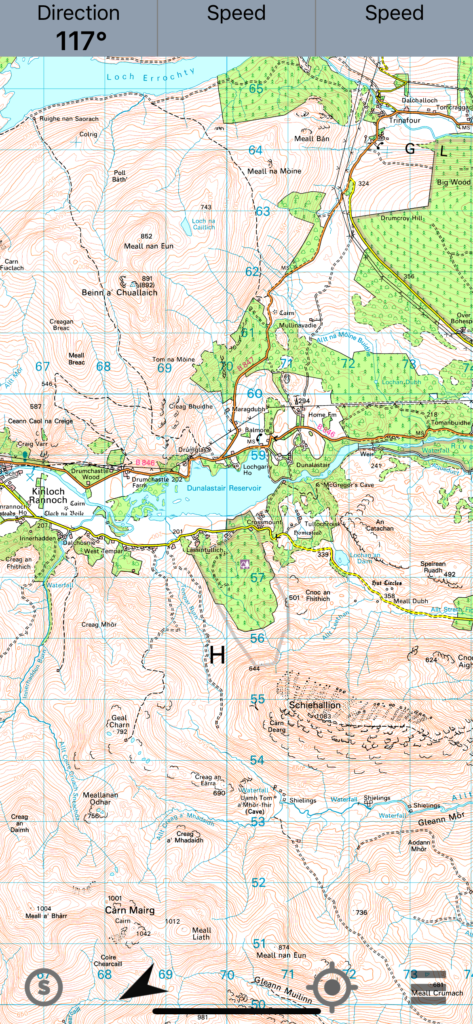

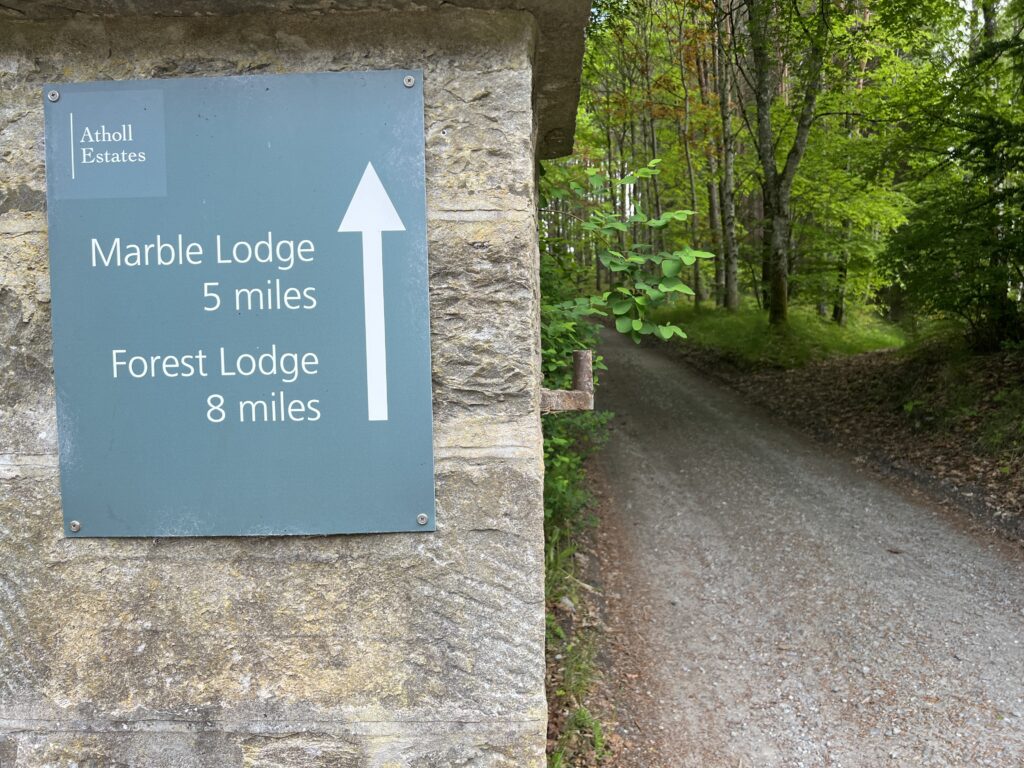


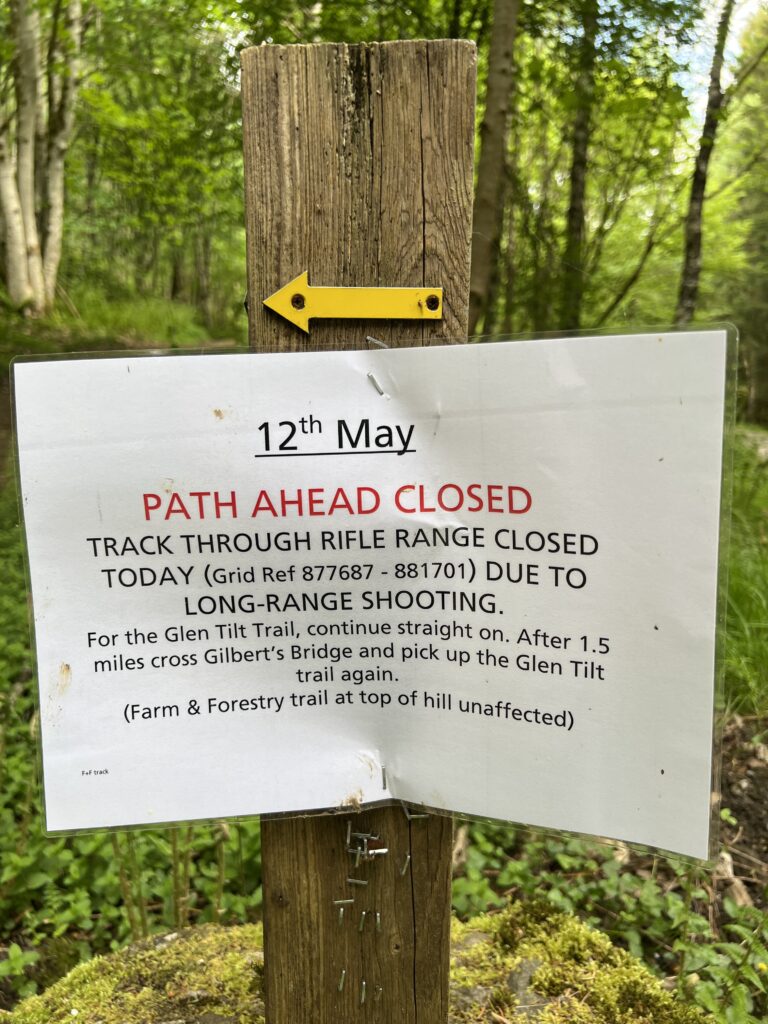

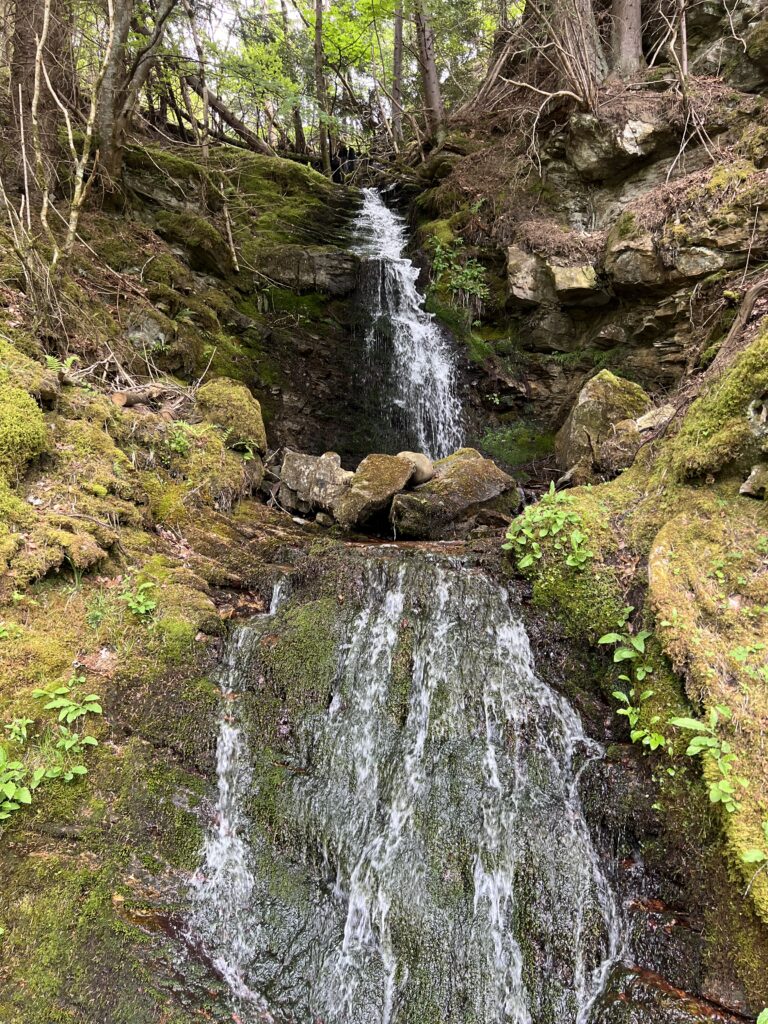
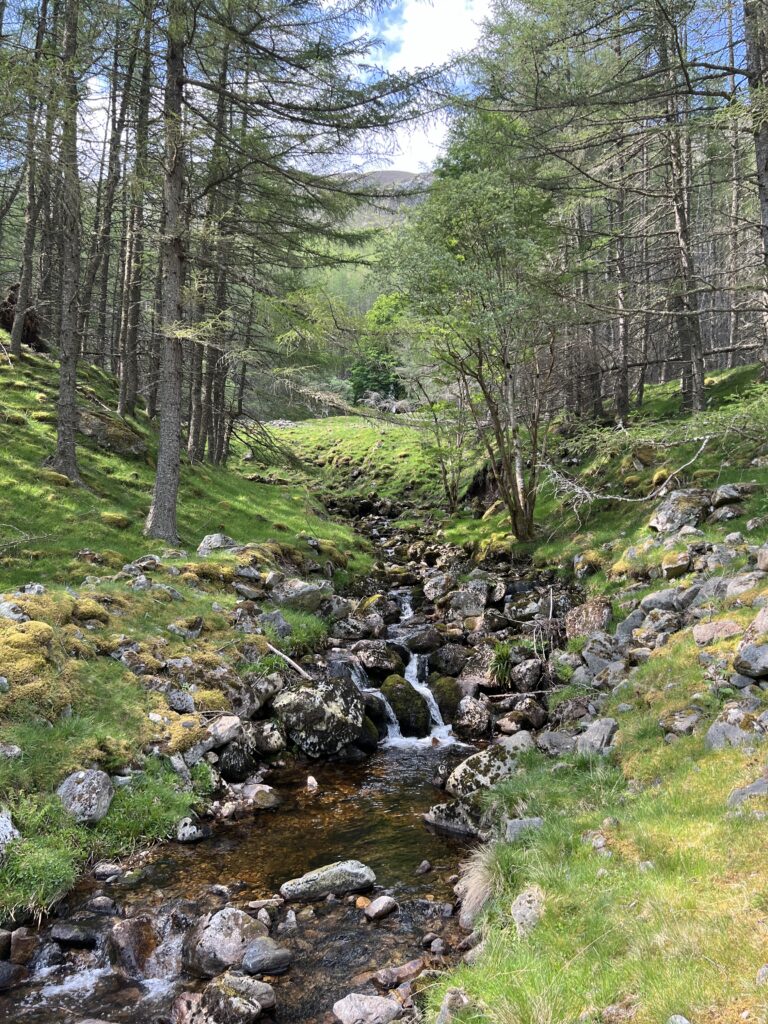
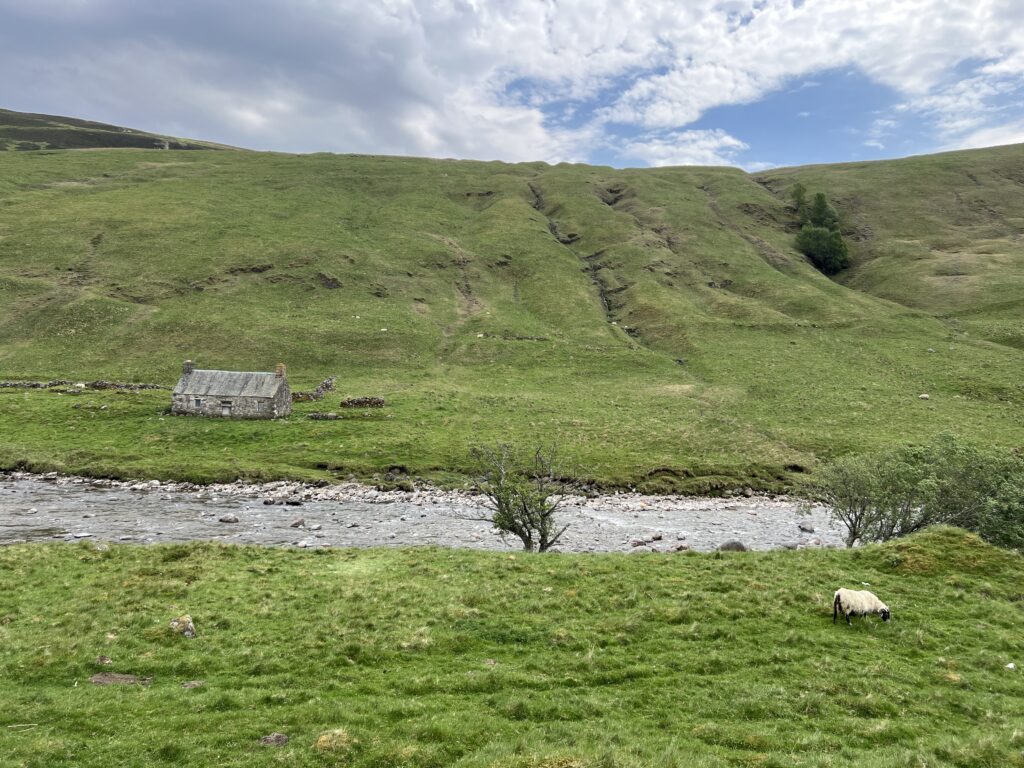




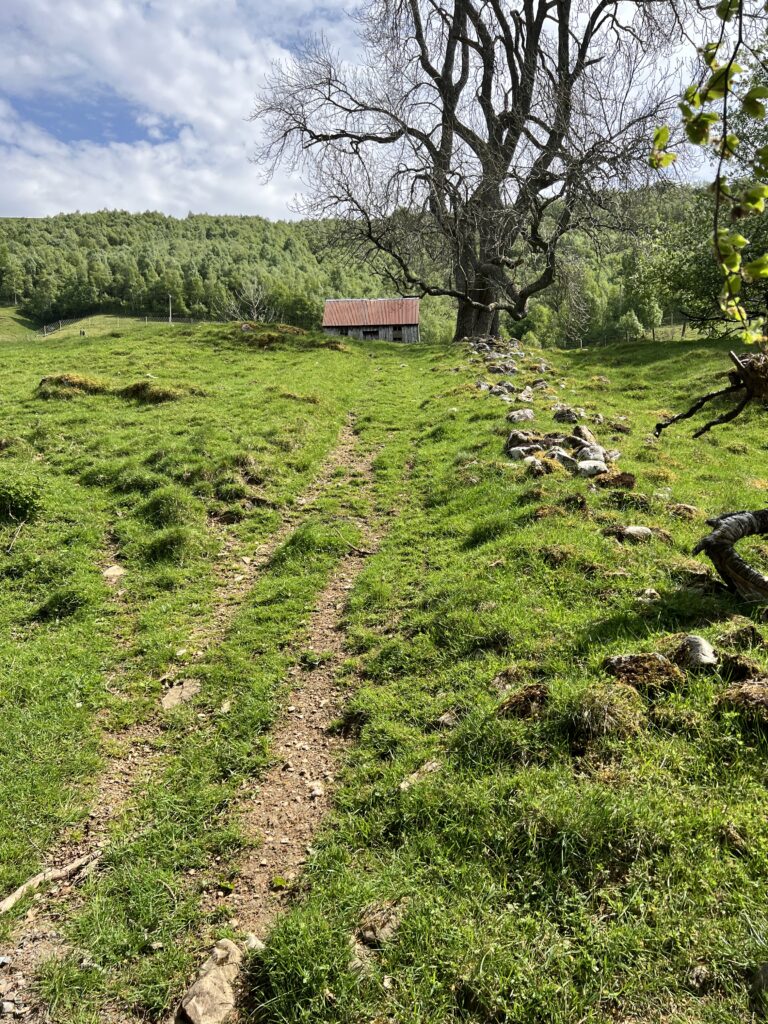


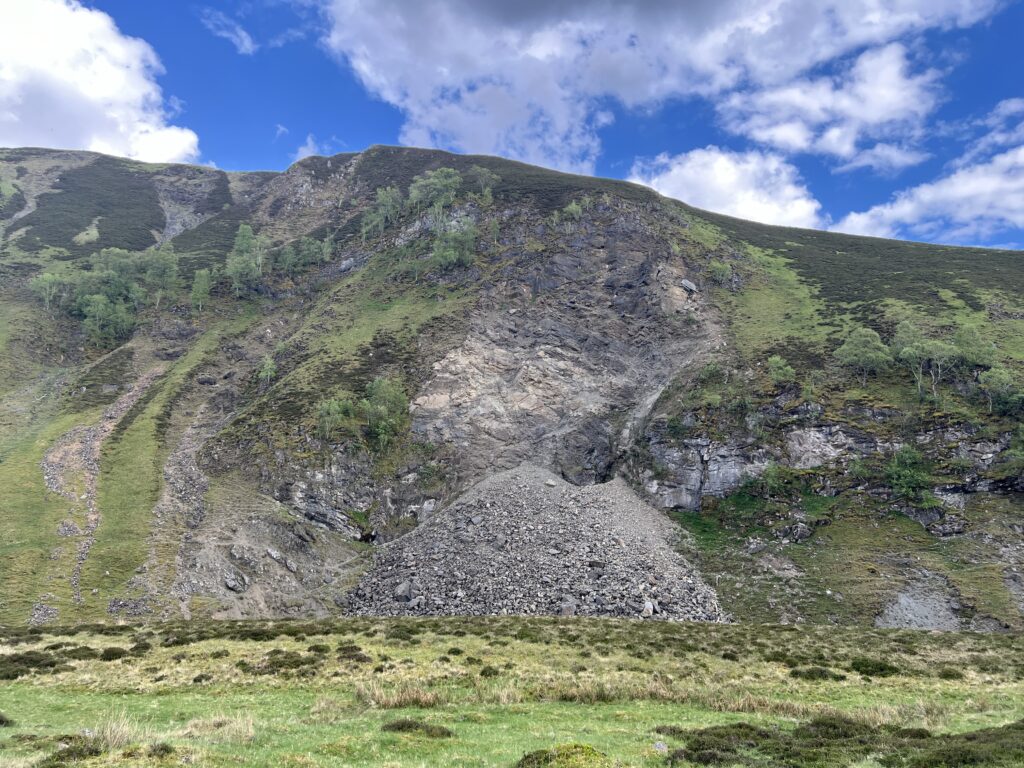
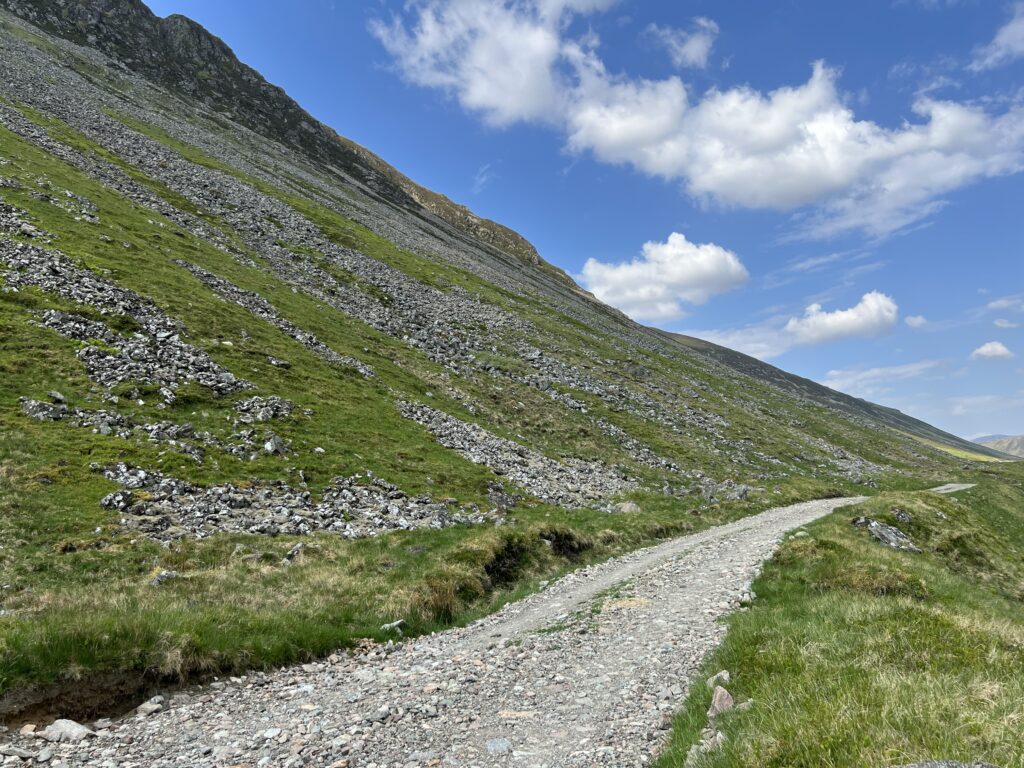
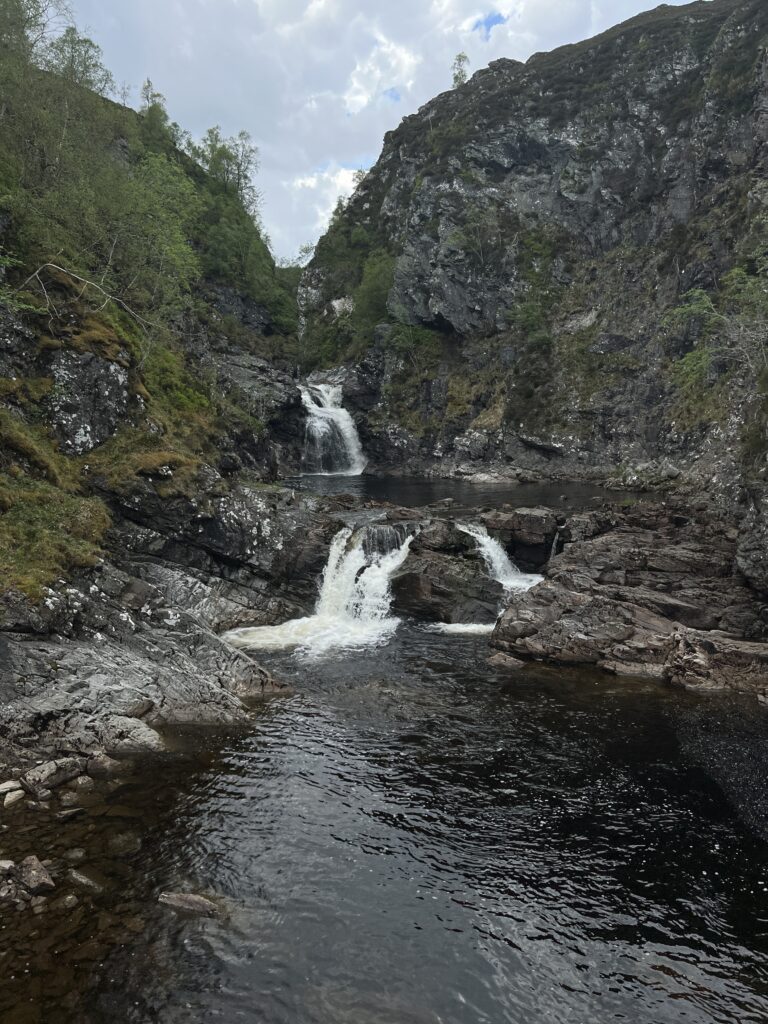


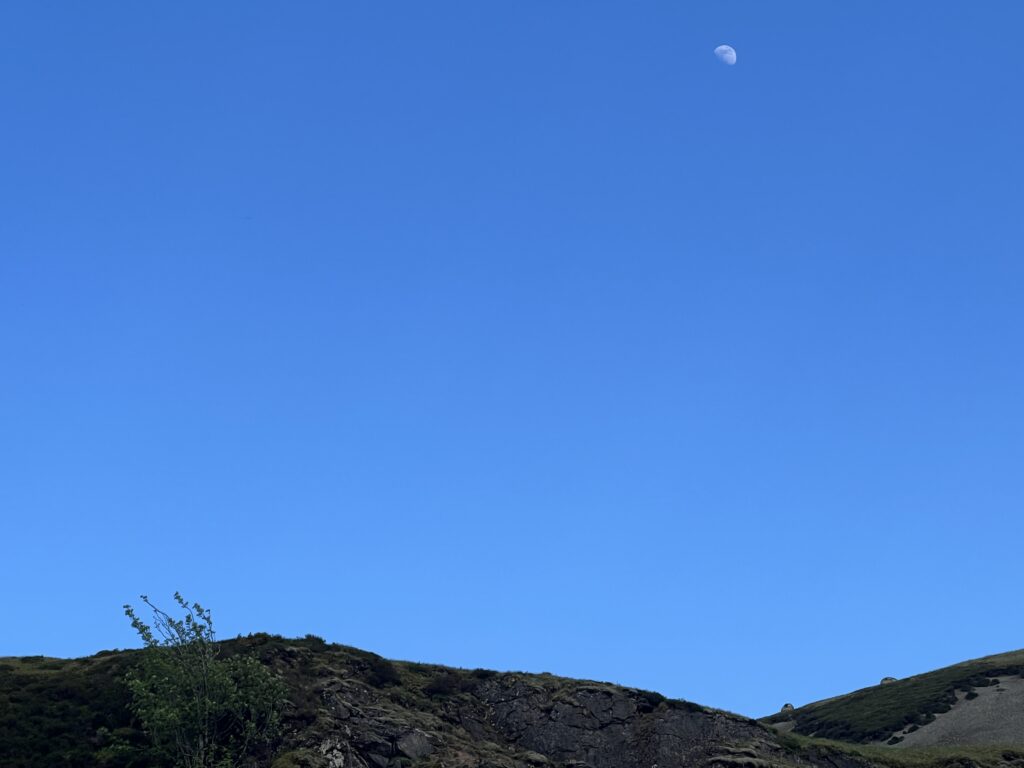
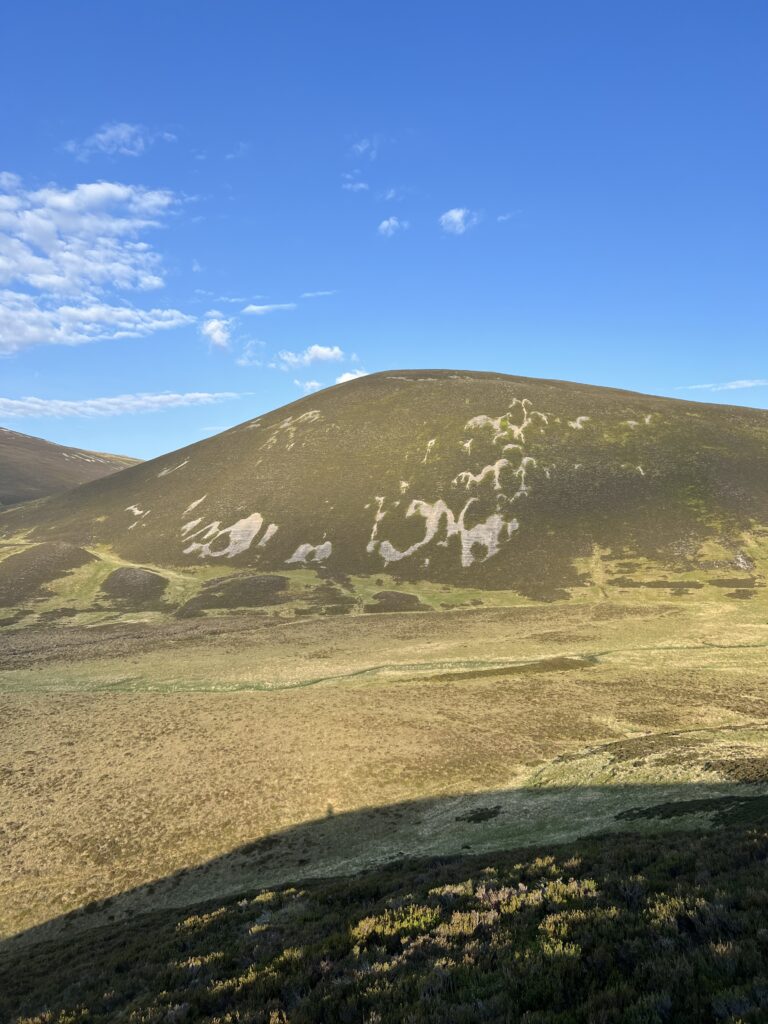

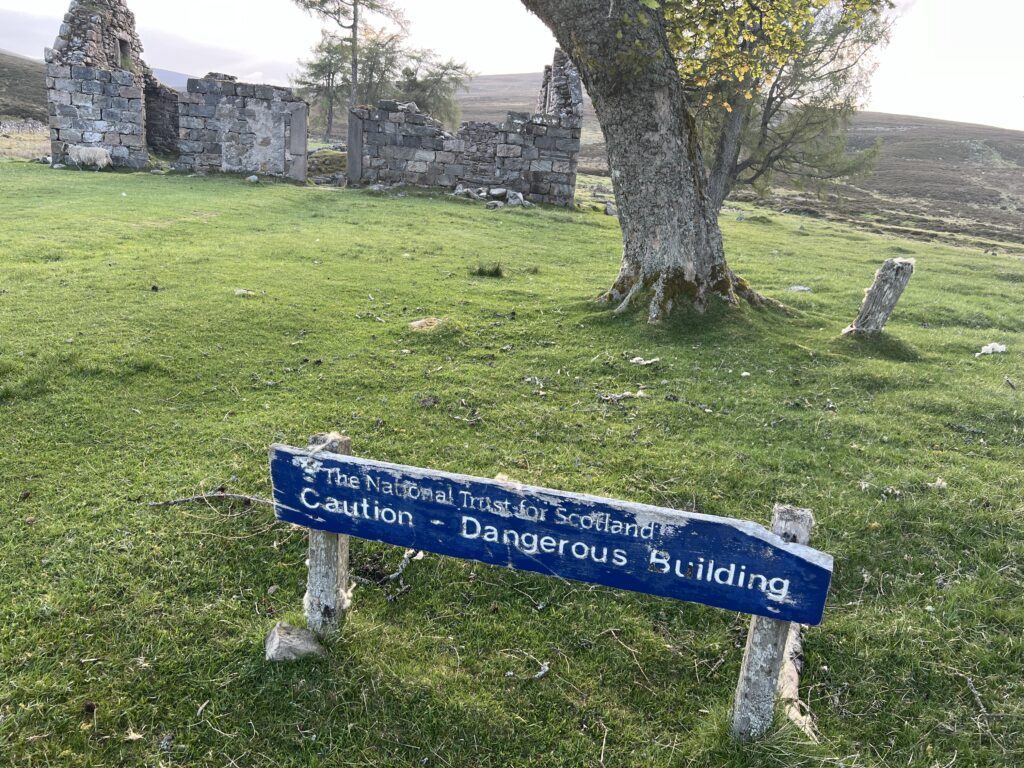


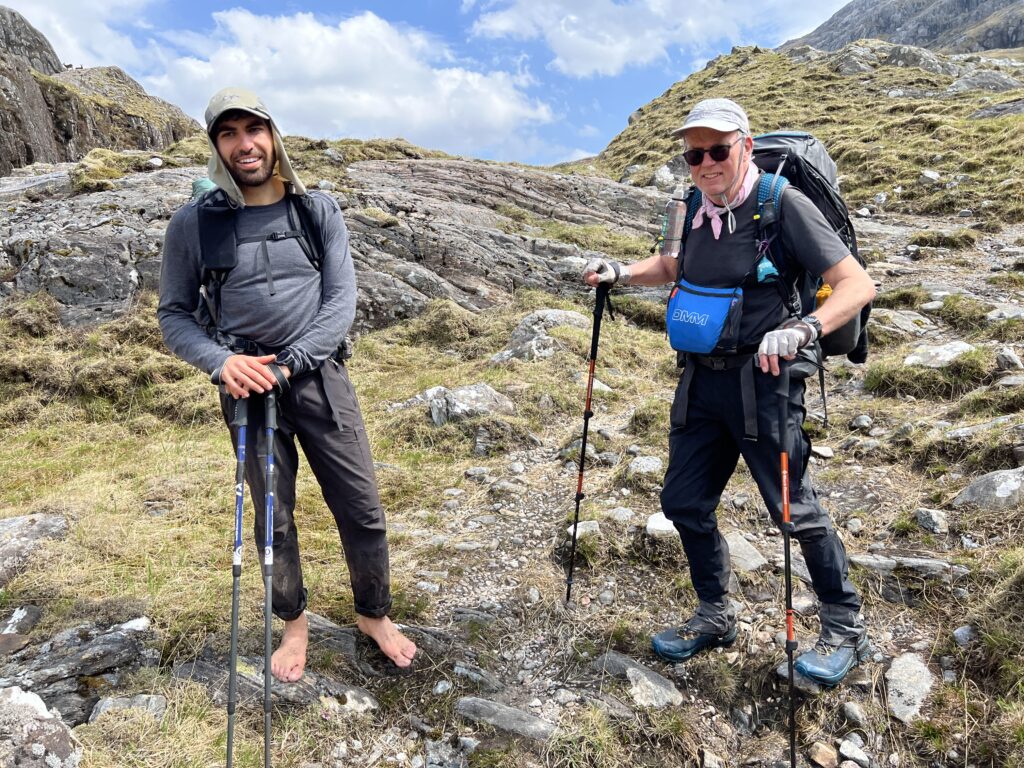





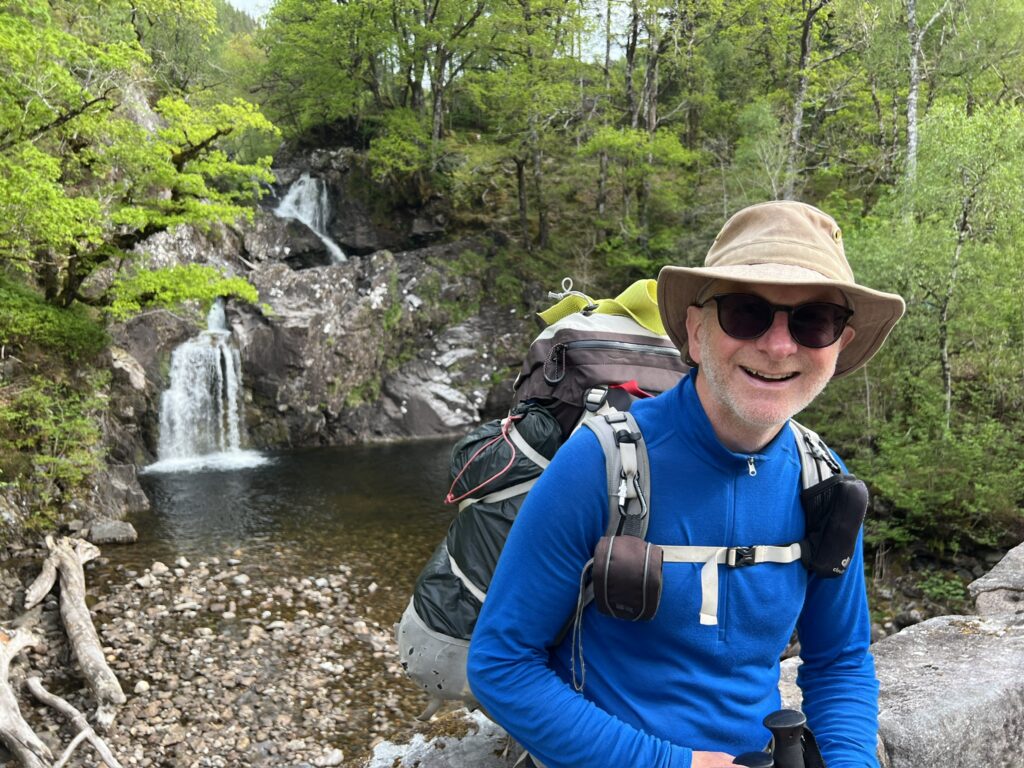

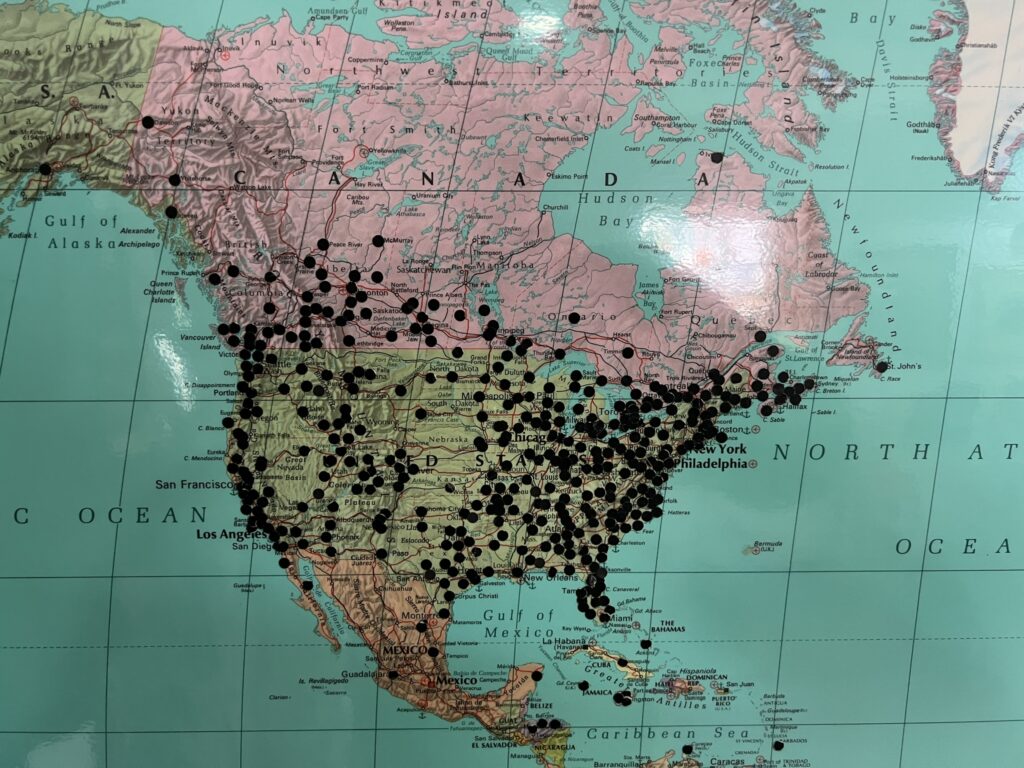



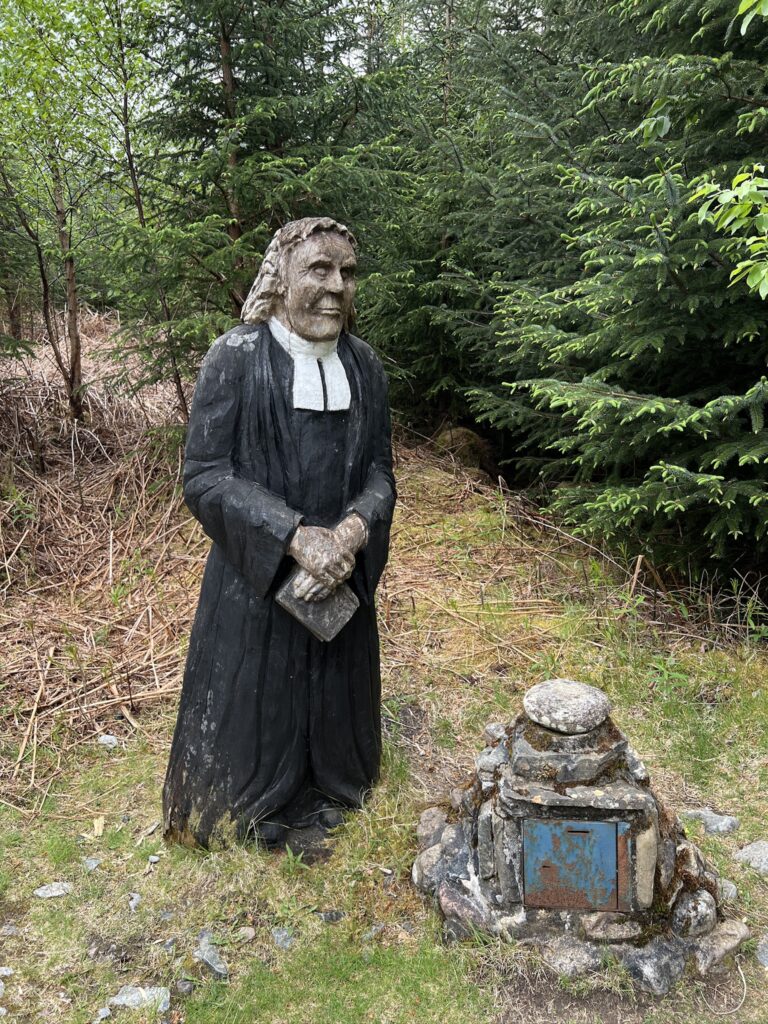



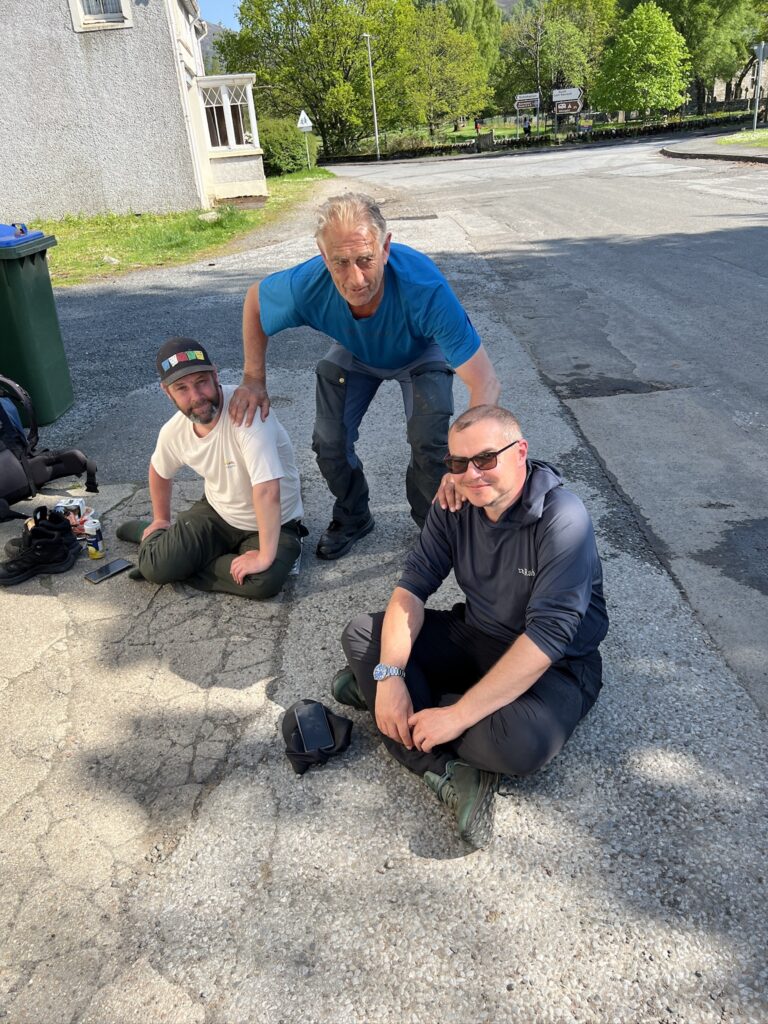

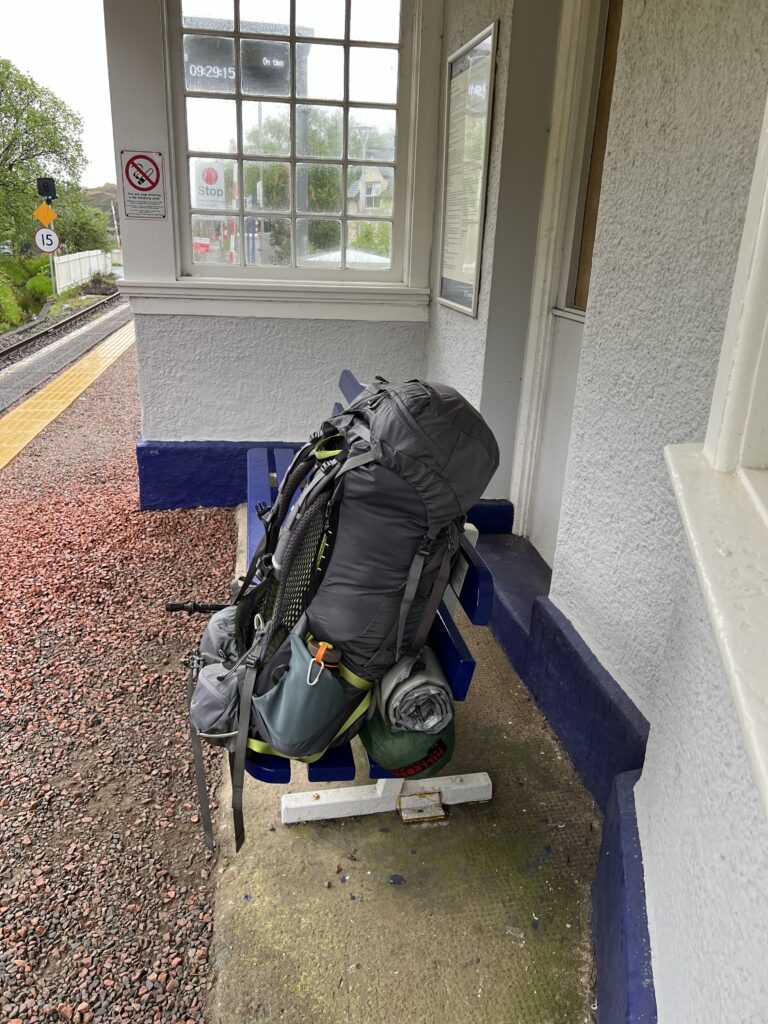

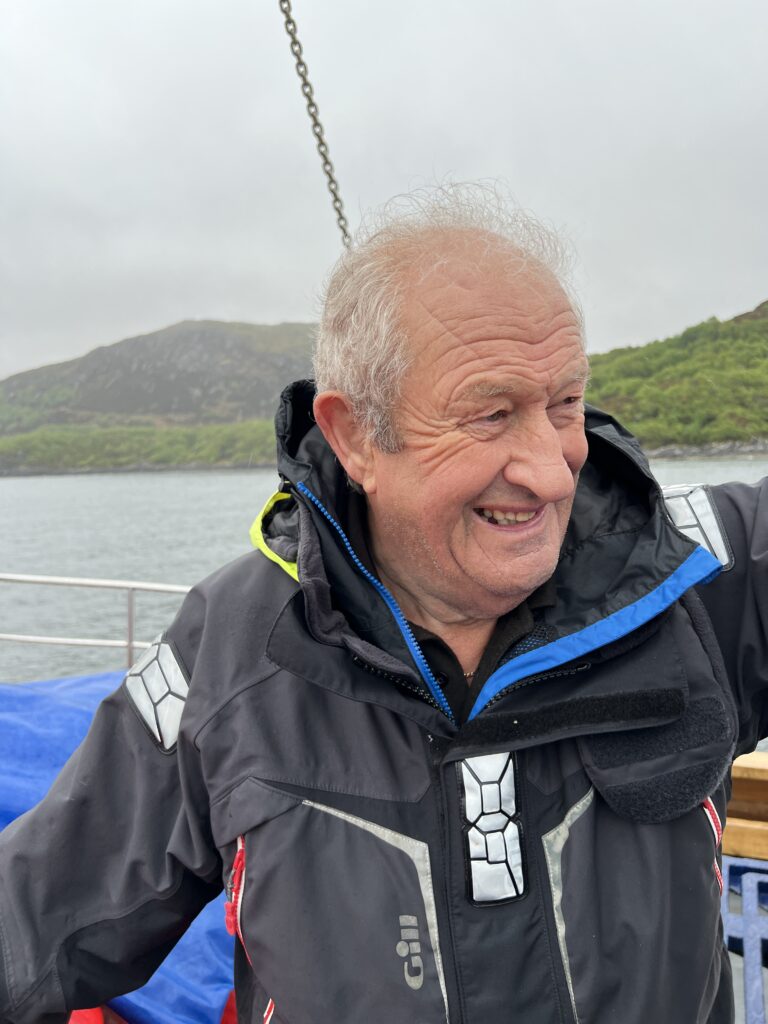
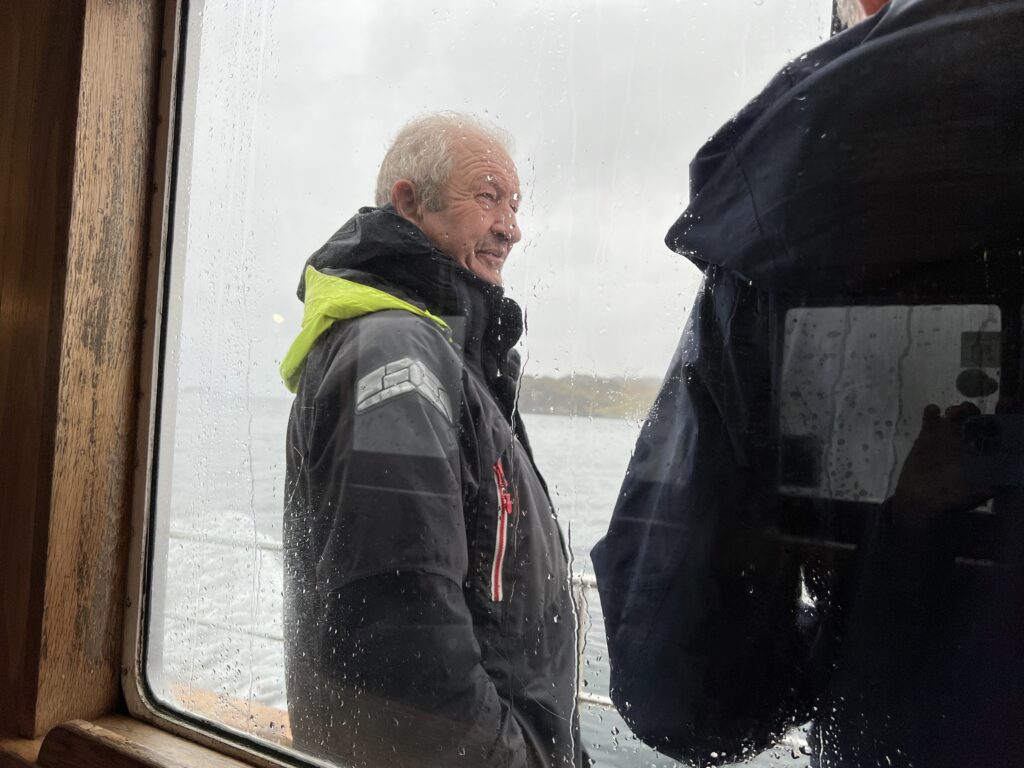
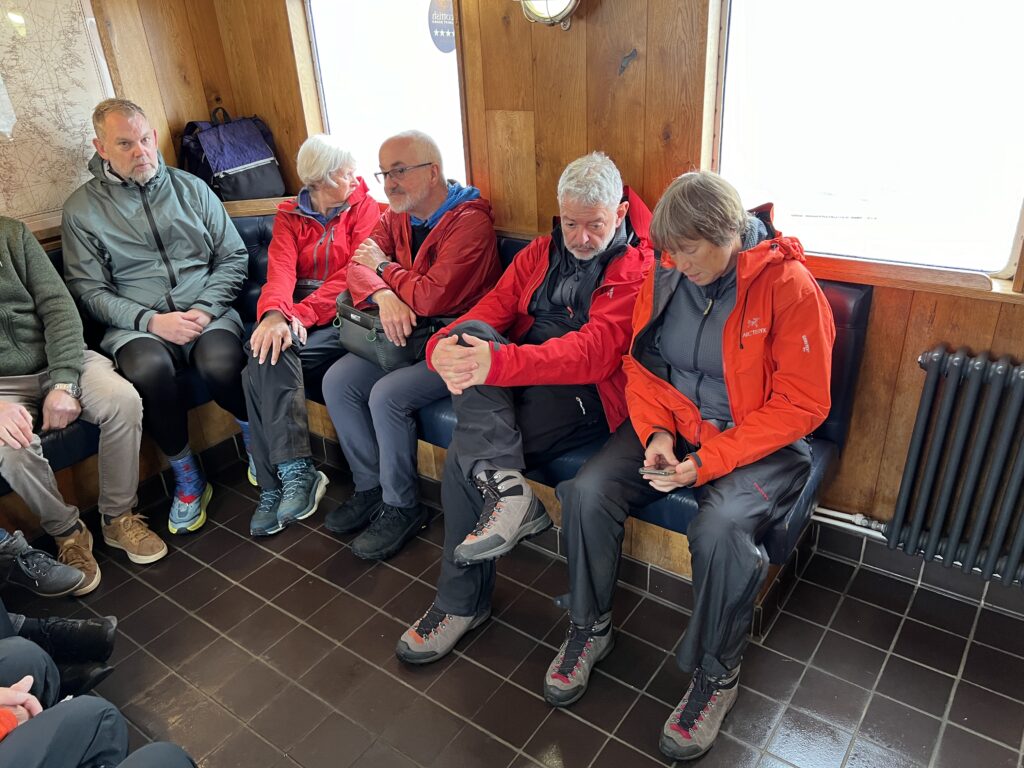
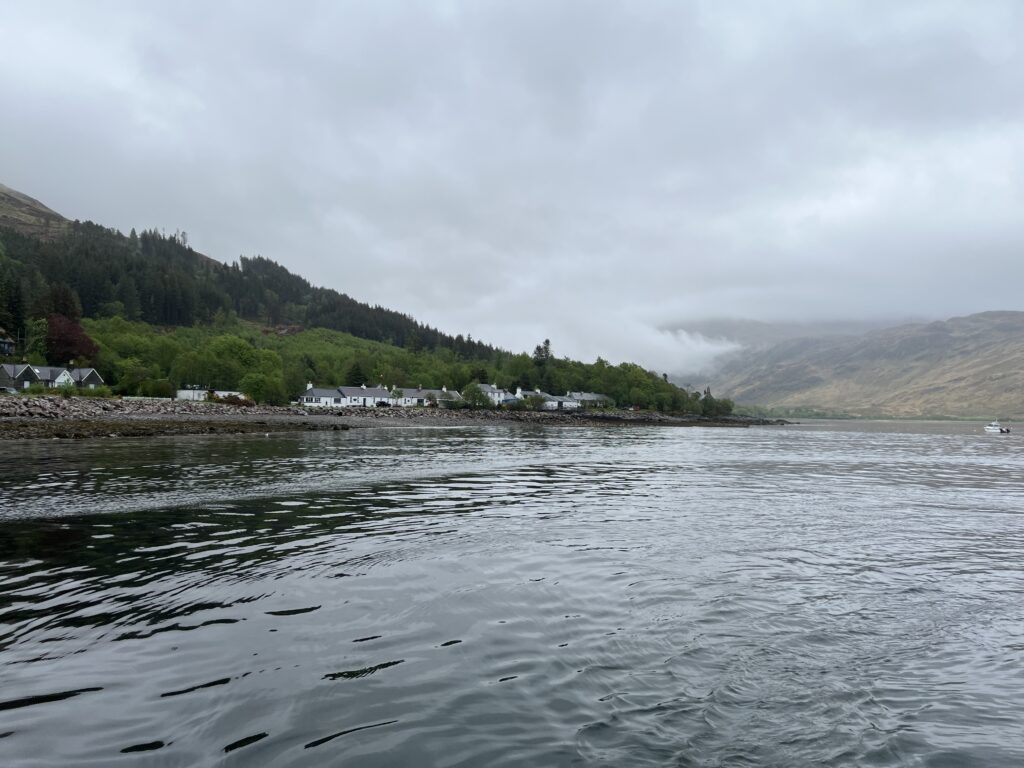

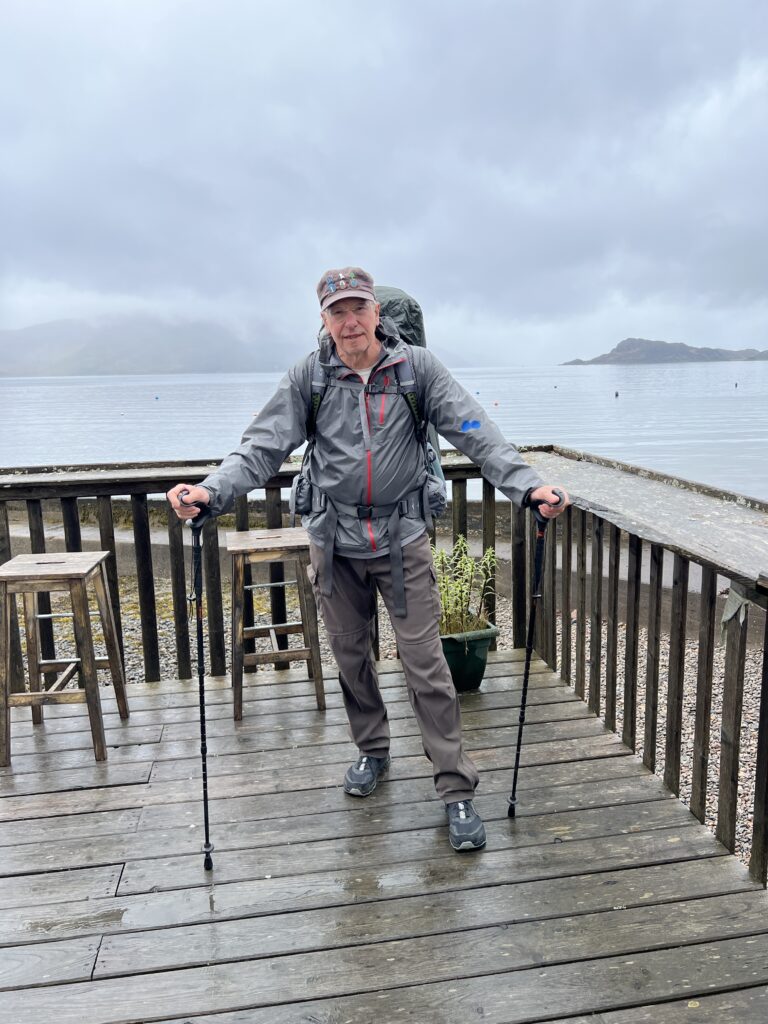
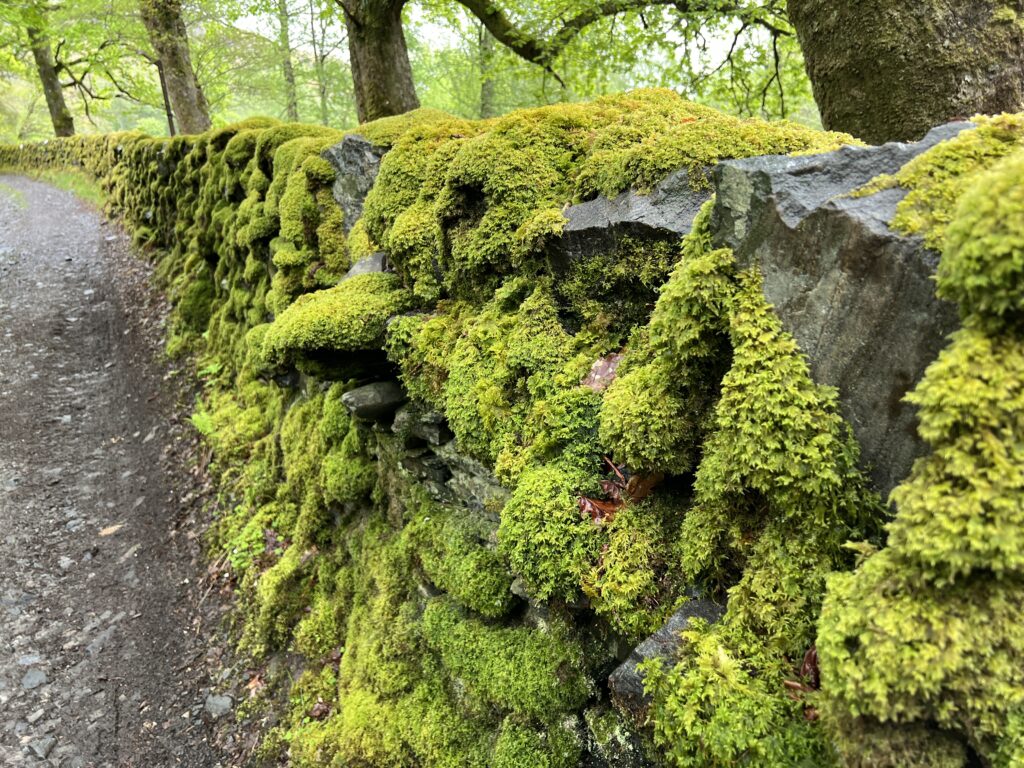







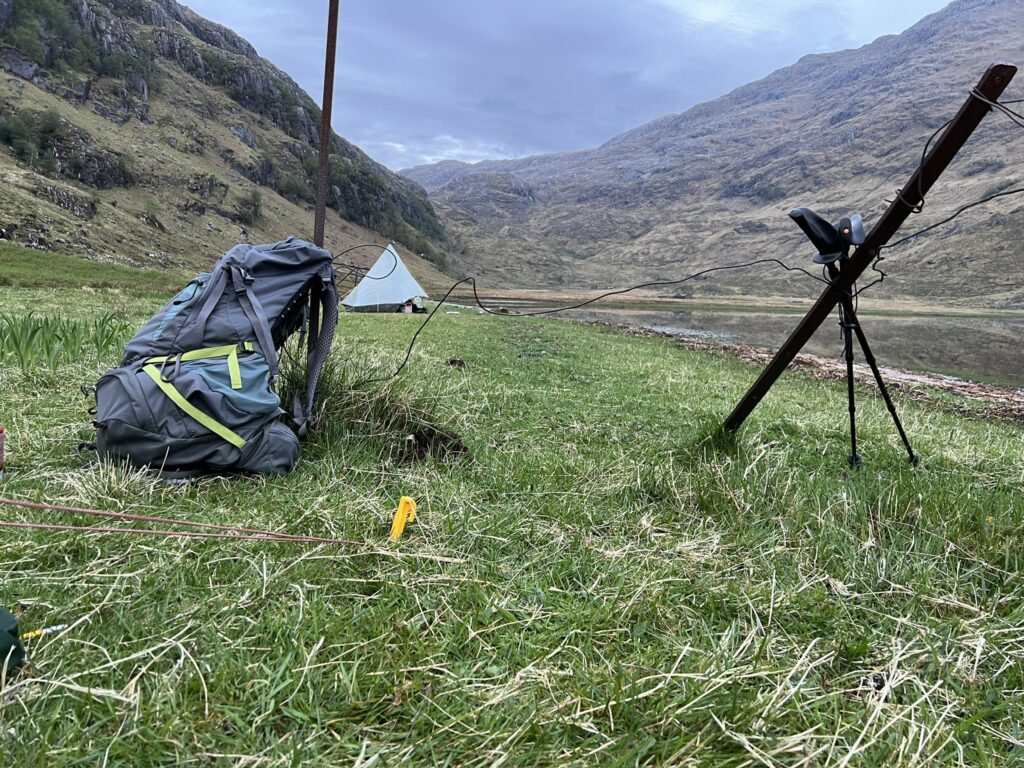
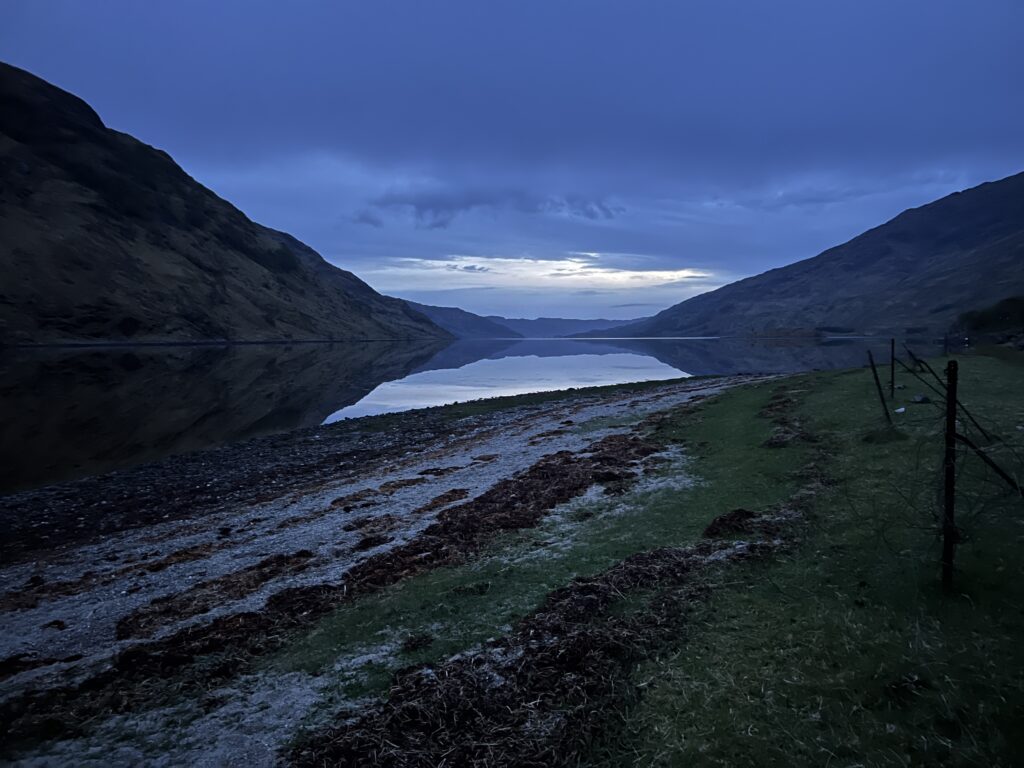
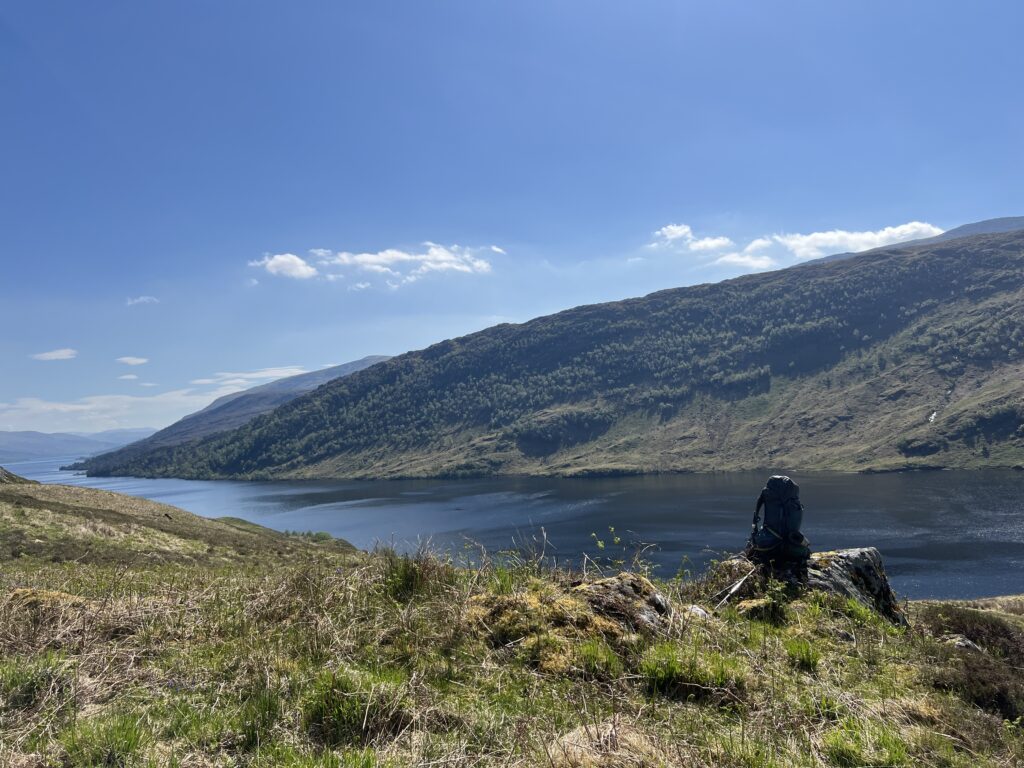
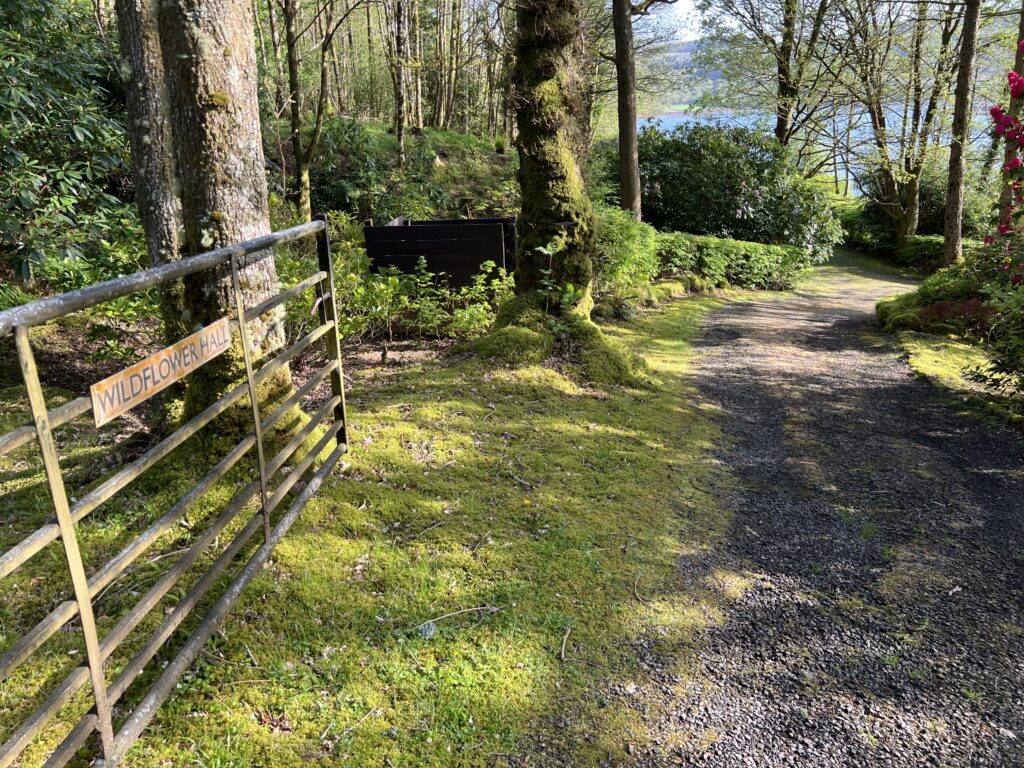
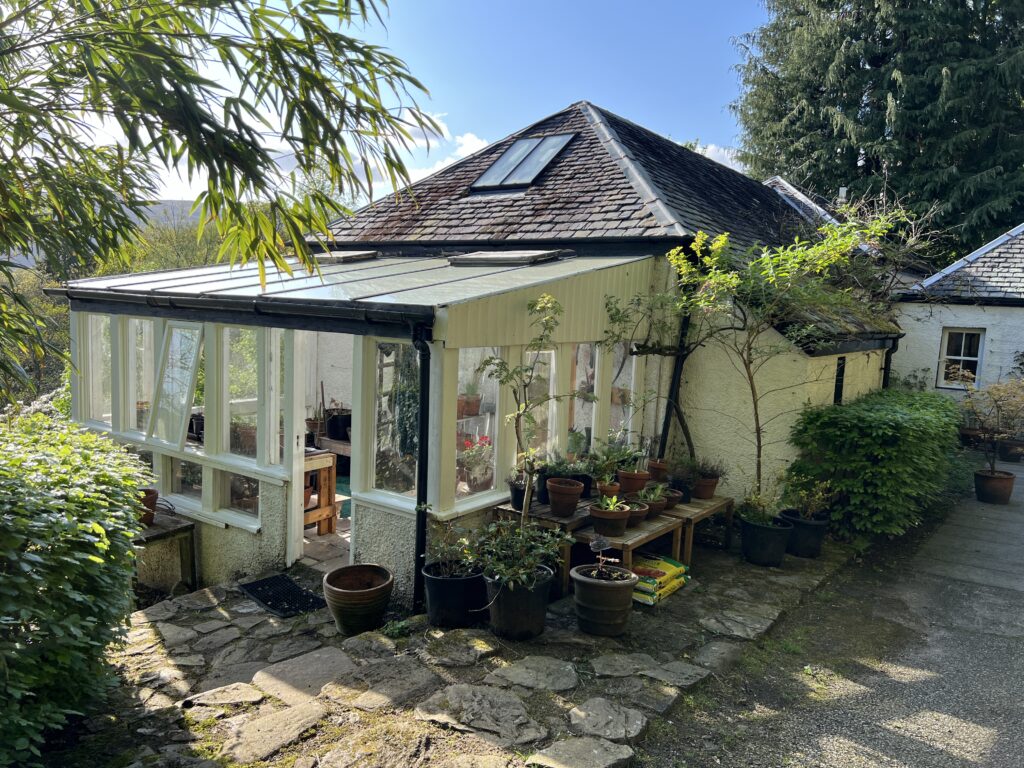
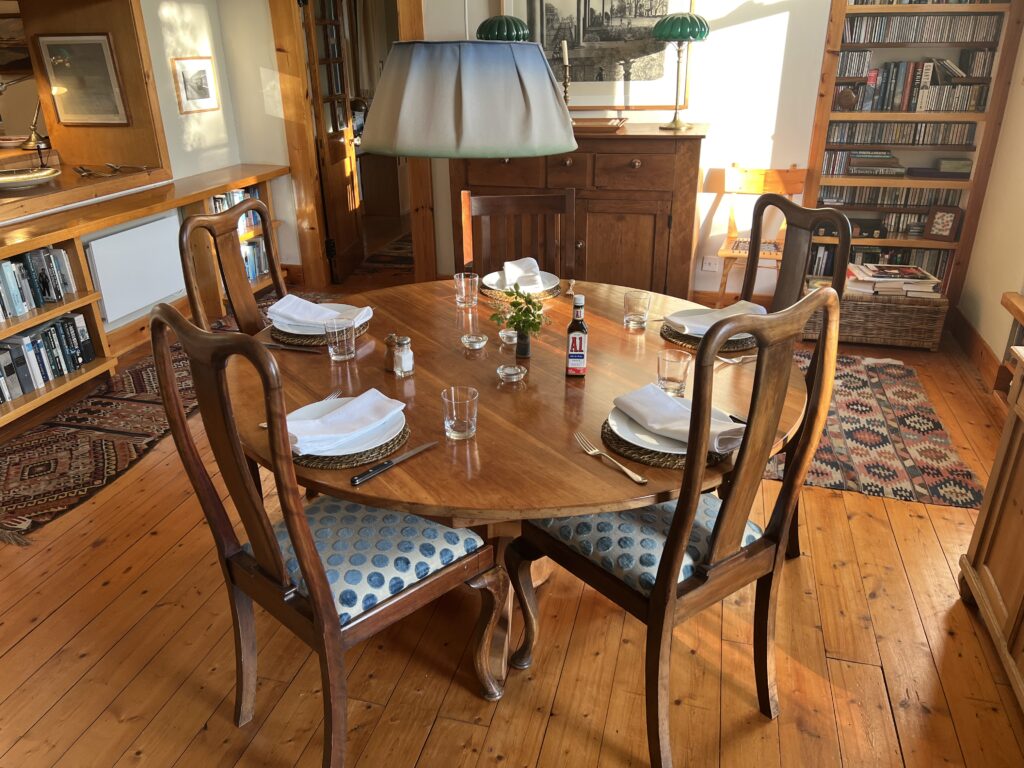

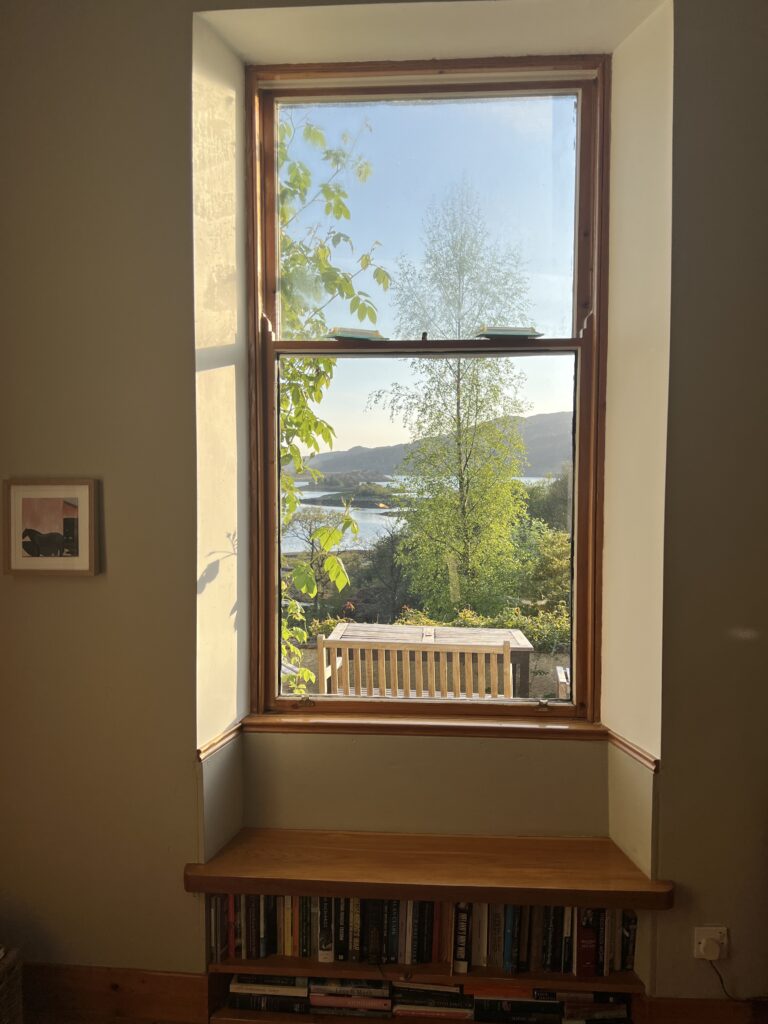
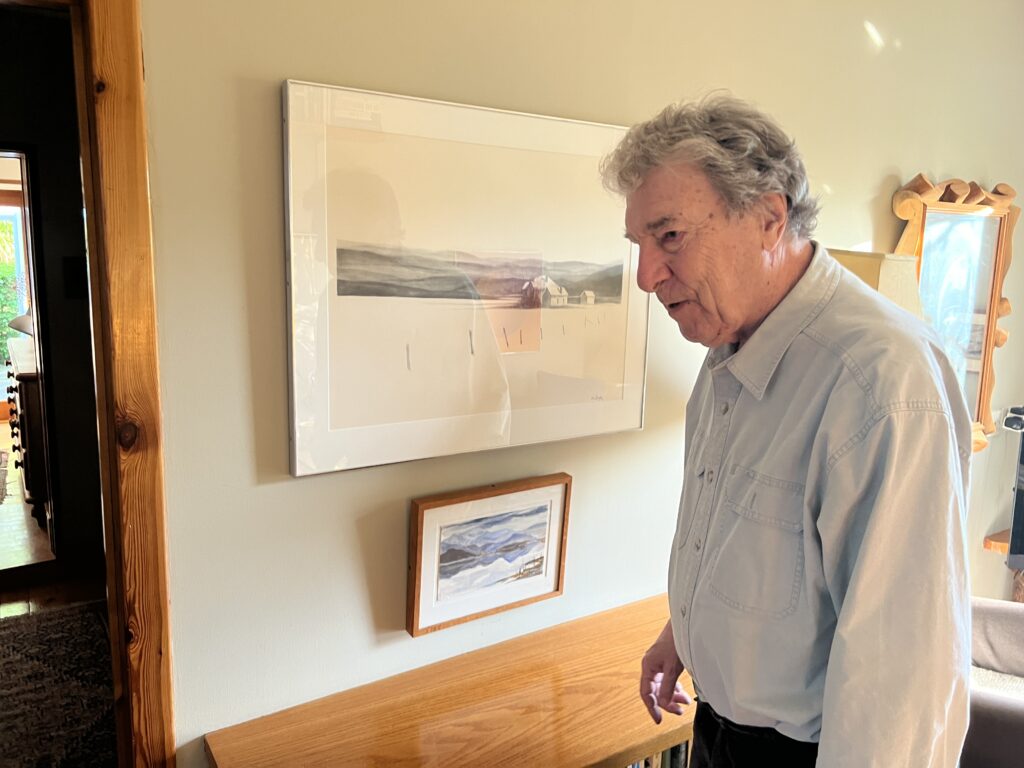



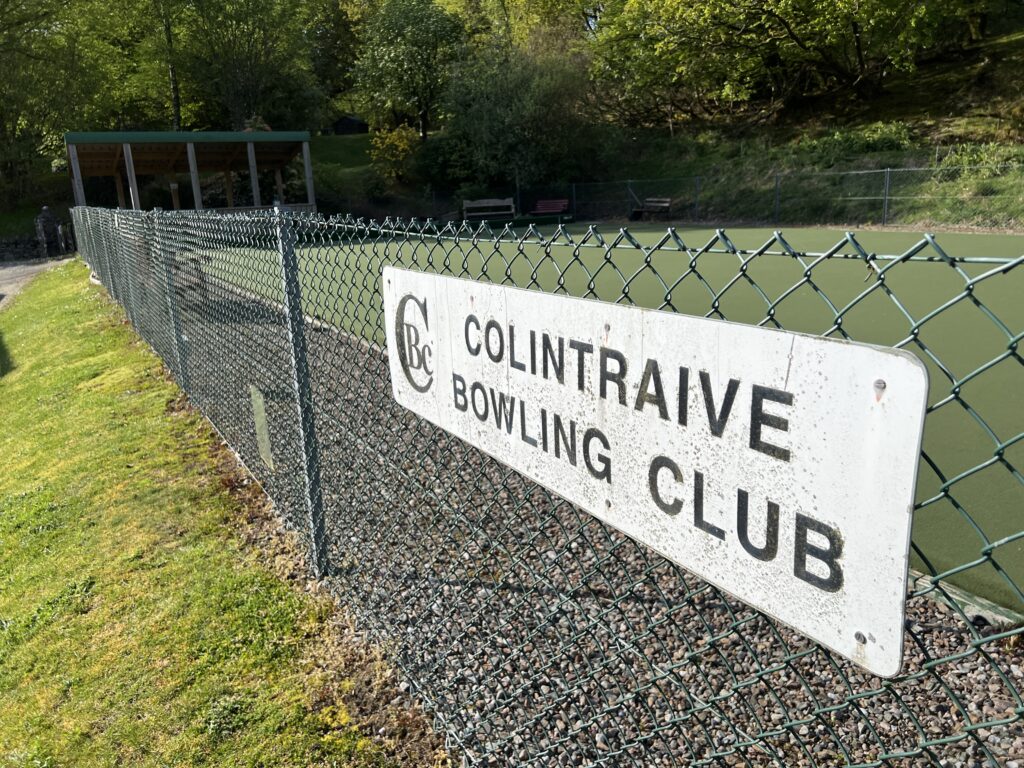





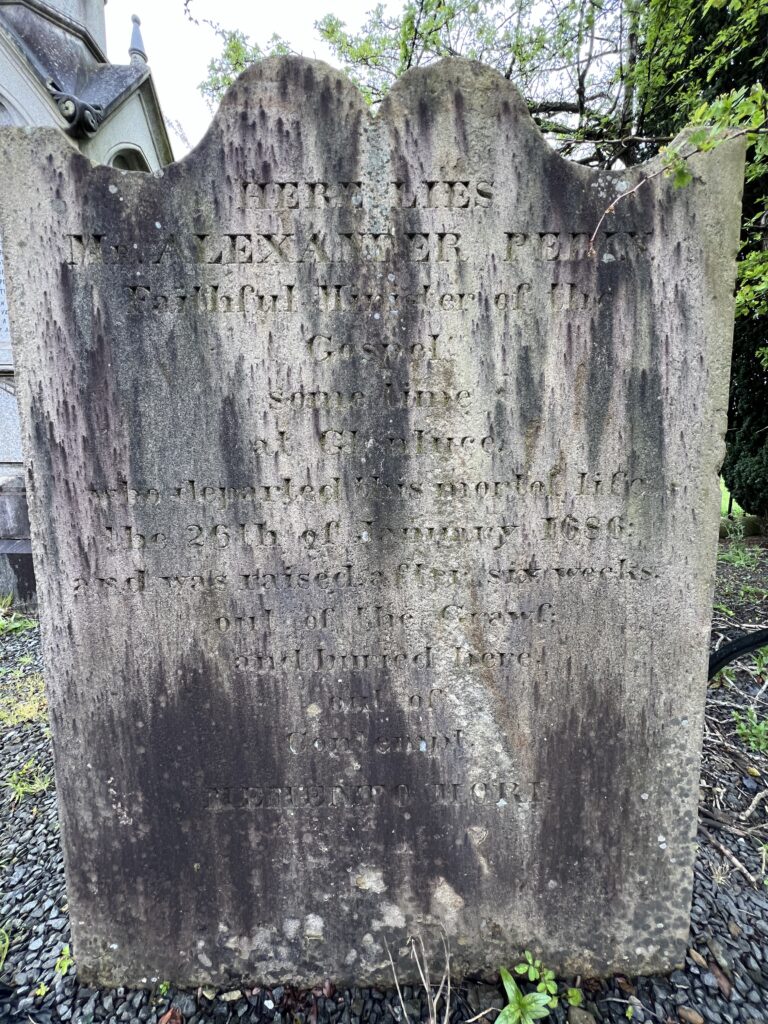



Recent Comments